Kitchen renovation drawing for a glass work wall. Glass apron in the interior of the kitchen
The appearance of skinali made it possible to reconsider approaches to the design of the kitchen interior. A glass kitchen apron has not only become a popular interior solution, it has managed to dislodge from the decorative Olympus, it would seem, the eternal kitchen inhabitant - ceramic tiles.
Why did this innovation so appeal to designers and apartment owners? How to do right choice glass decor for a specific situation? What information about the material you need to have in order to avoid disappointment? This will be discussed further.
Glass apron in the kitchen: pros and cons
"An apron for a kitchen made of glass is the easiest way to decorate its interior and emphasize the individuality of the situation"
Compared with wall tiles skinali looks much more impressive. Glass panels are characterized by:
1. Hygiene;
3. Easy installation;
4. Strength;
5. Durability;
6. Operational safety.
Glass kitchen apron looks spectacular
The first is provided by the absence grout joints and various irregularities, that is, places where dirt likes to accumulate. The second is the unlimited choice of design options. Any pattern can be applied to the panel. It can also be dyed suitable color. Whatever the finish, it will never lose its attractiveness (it will not burn out, it will not be erased, it will not be washed off). And yet, the glossy surface of the apron will participate in the adjustment kitchen space, which will greatly help to properly arrange small rooms.
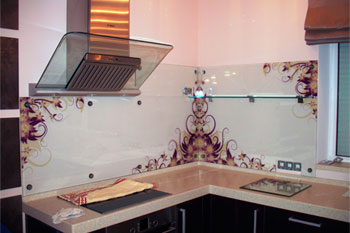
Any design can be applied to a glass apron
An apron for a kitchen made of glass is the easiest way to decorate its interior and emphasize the individuality of the situation.
There is only one drawback to such a design element: durable glass cannot be cut at home, which does not allow you to adjust its configuration, as well as make additional holes, for example, to bring out sockets.
Not all glass is suitable for an apron
Glass 6 - 8 mm thick, which has undergone special processing, can serve as a material for creating a skinali. In the working area, only its tempered version should be used, since it fully complies with safety requirements and can actually be a durable and reliable coating. The strength of such glass is 5 times higher than that of ordinary glass. Even if you manage to break it, the panel will crumble into small and non-sharp fragments.
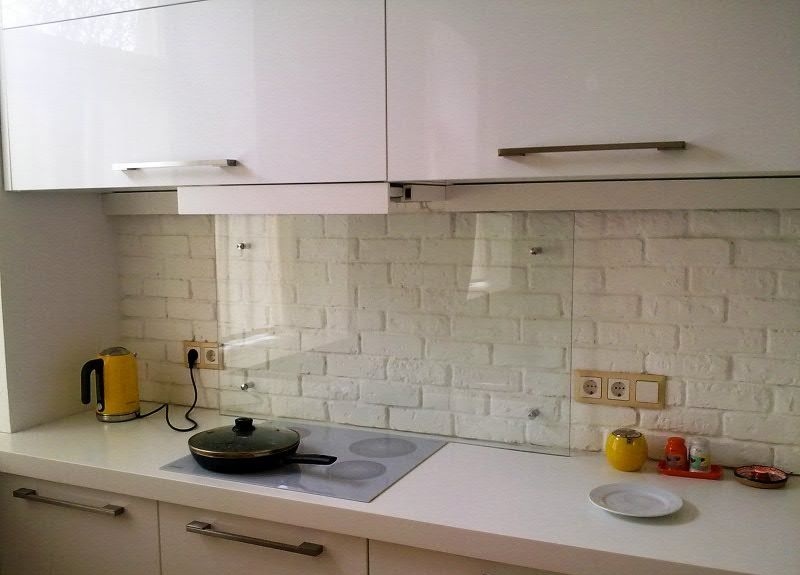
Only tempered glass is used for the apron
Tempered glass will feel great in the slab area and hobs. He is not afraid of temperature tests.
Ordinary glass is not as reliable because it breaks easily. As for plexiglass, it is a very unsuitable option for decoration. working area. This type of finish will not withstand temperature extremes, it will quickly get scratched, and it is also difficult to clean off fatty contaminants.
To create a picturesque glass backsplash in the kitchen, discolored glass may be required. It is distinguished from the standard-produced counterpart by the absence of a pronounced “bottle” shade. On colored panels with landscapes, still lifes, urban motifs, the greenish background will be almost invisible, but if the apron is designed mainly in white, then it will be impossible to do without Optiwhite.

Optiwhite glass for backsplash
The high transparency of the glass will not only not spoil the idea, but also make the apron pattern as expressive and rich as possible. The cost of Optiwhite is 30 percent more than hardened, but the costs pay off with interest.

Optiwhite glass kitchen apron
How to make a glass apron
1. Colorless and no colorful pattern. To do this, you need a transparent or matte finish. The advantage of an apron for a kitchen made of transparent glass is invisibility. It literally melts into space. The main task of such a finish is to protect the area pasted over with photo wallpapers or painted walls from pollution. Frosted glass in this case looks more interesting. It doesn't give as much glare and can have a textured finish. The satin version is especially popular. Another popular solution is sandblasting* glass processing or silk-screen printing. These are methods that allow you to make inscriptions, transparent drawings and ornaments on the surface.
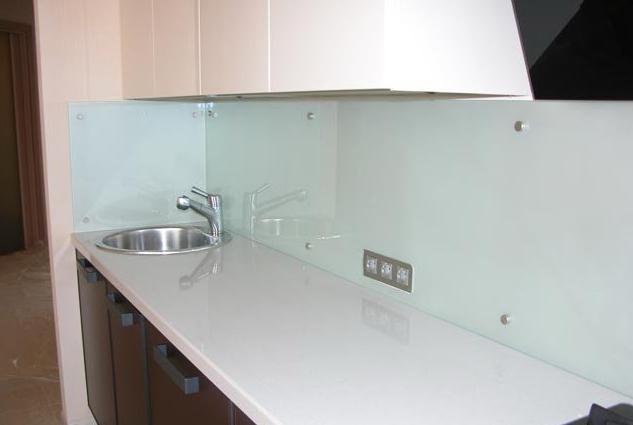
Frosted glass kitchen apron
2. With photo print finishing. Full-color UV printing allows you to apply incredibly colorful images to the surface of the panels. Today, this is the most favorite technique for decorating a kitchen space by designers. The apron turns out to be very attractive and ready to serve for many years. Pictures are printed from back side glass. The UV ink used in the work does not lose its brightness over time, does not spread when wet and does not crack even at a temperature of 120 °. A glass panel with a 3D image will look unusually impressive in the working area.
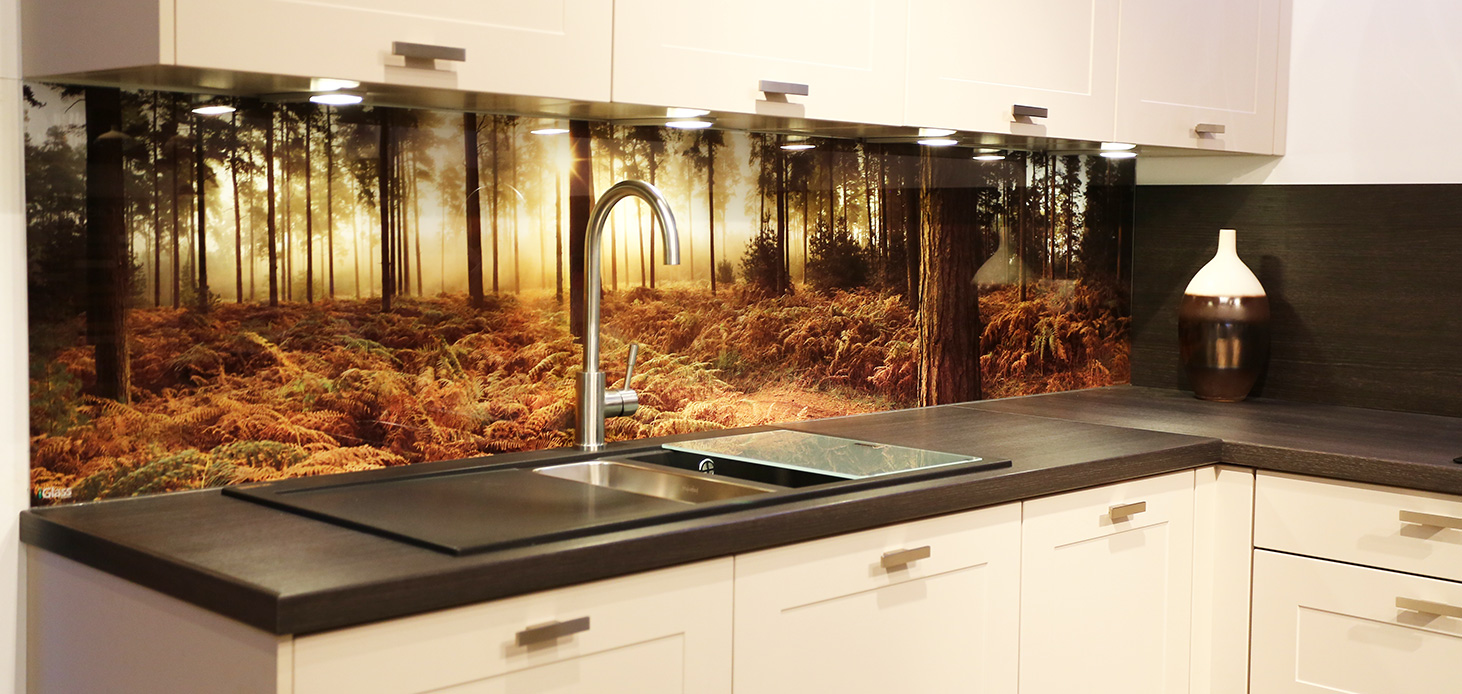
Apron for kitchen made of glass with 3D image
3. Painted. A glass apron painted in a single color in the kitchen is a stylish solution, often bright, but at the same time unobtrusive. The range of available tones is, without exaggeration, huge. Stemalite can be used to make it. The paint is passed along the “wrong side” of the panel, after which the glass is sent for heat treatment. This method of decorating glass guarantees its color durability.
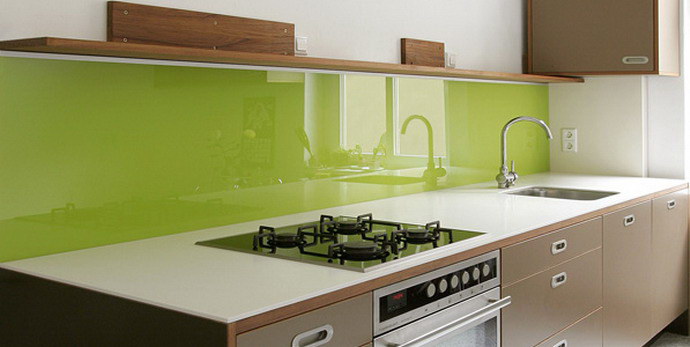
Plain apron for the kitchen made of glass
4. Pasted over with vinyl film. It's over budget way put an interesting pattern on an apron for a glass kitchen, rather than photo printing. The film is also rolled on the back side of the panel. This will allow the glass to protect the decor from the unfavorable kitchen microclimate. When working with vinyl film, you need to try very hard to stick it with high quality, without bubbles and wrinkles. In this case, it will not flake off and crack.
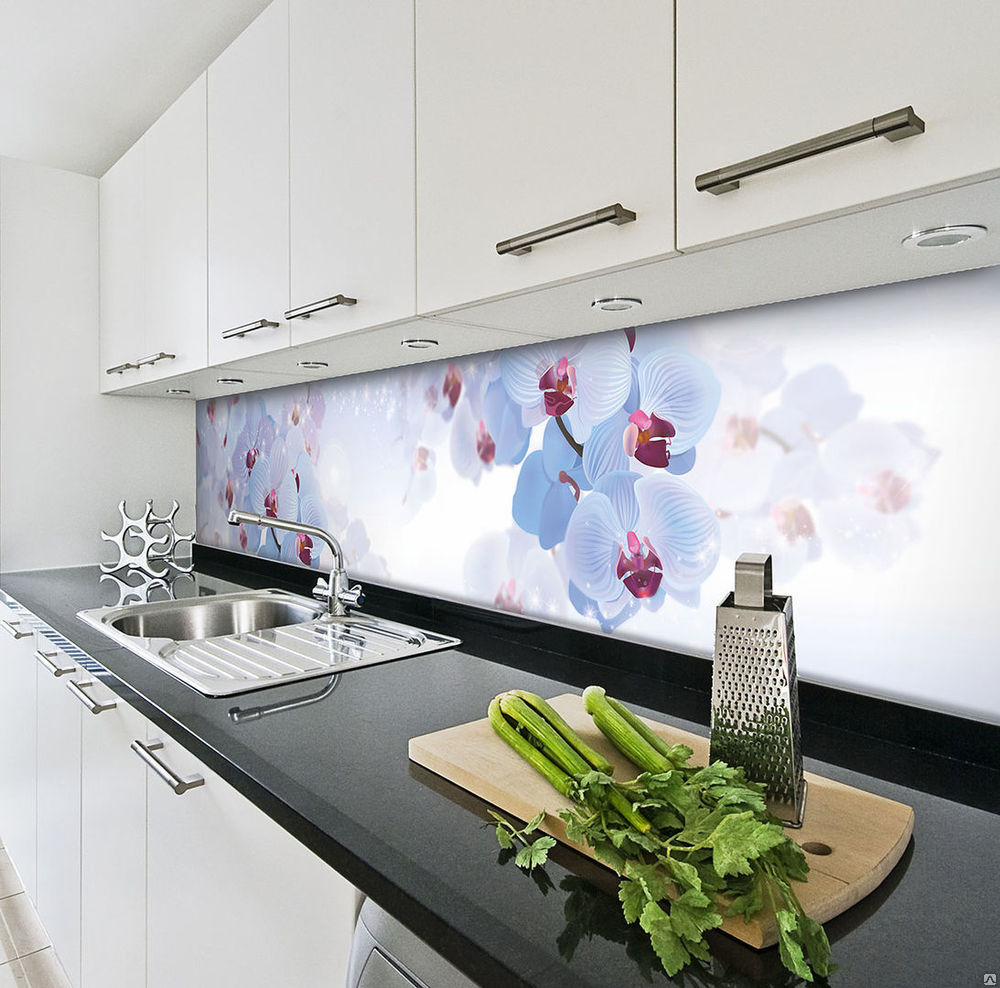
glass apron with vinyl film
5. Use triplex. This term refers to laminated glass. It varies in thickness. The advantage of this technology is that, in fact, a kind of glass sandwich is created, the filling of which is a colorful image.
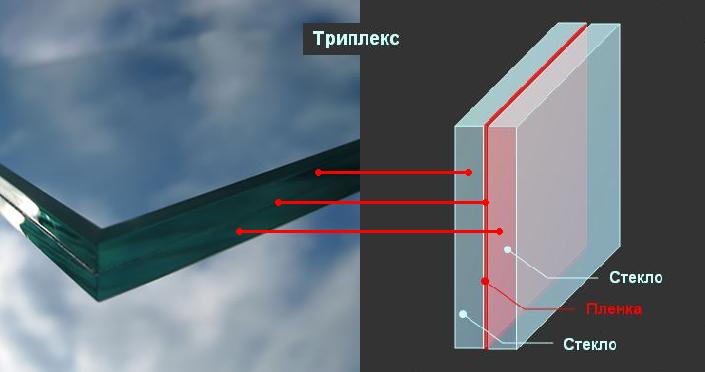
Triplex glass
Break triplex is almost impossible. The maximum that can happen to this "pie" is cracking. The apron is good in everything, but triplex is not a frequent guest in the kitchen. The reason for this is the high cost and the inability to process "under the spot". Sockets and roof rails cannot be inserted into it.
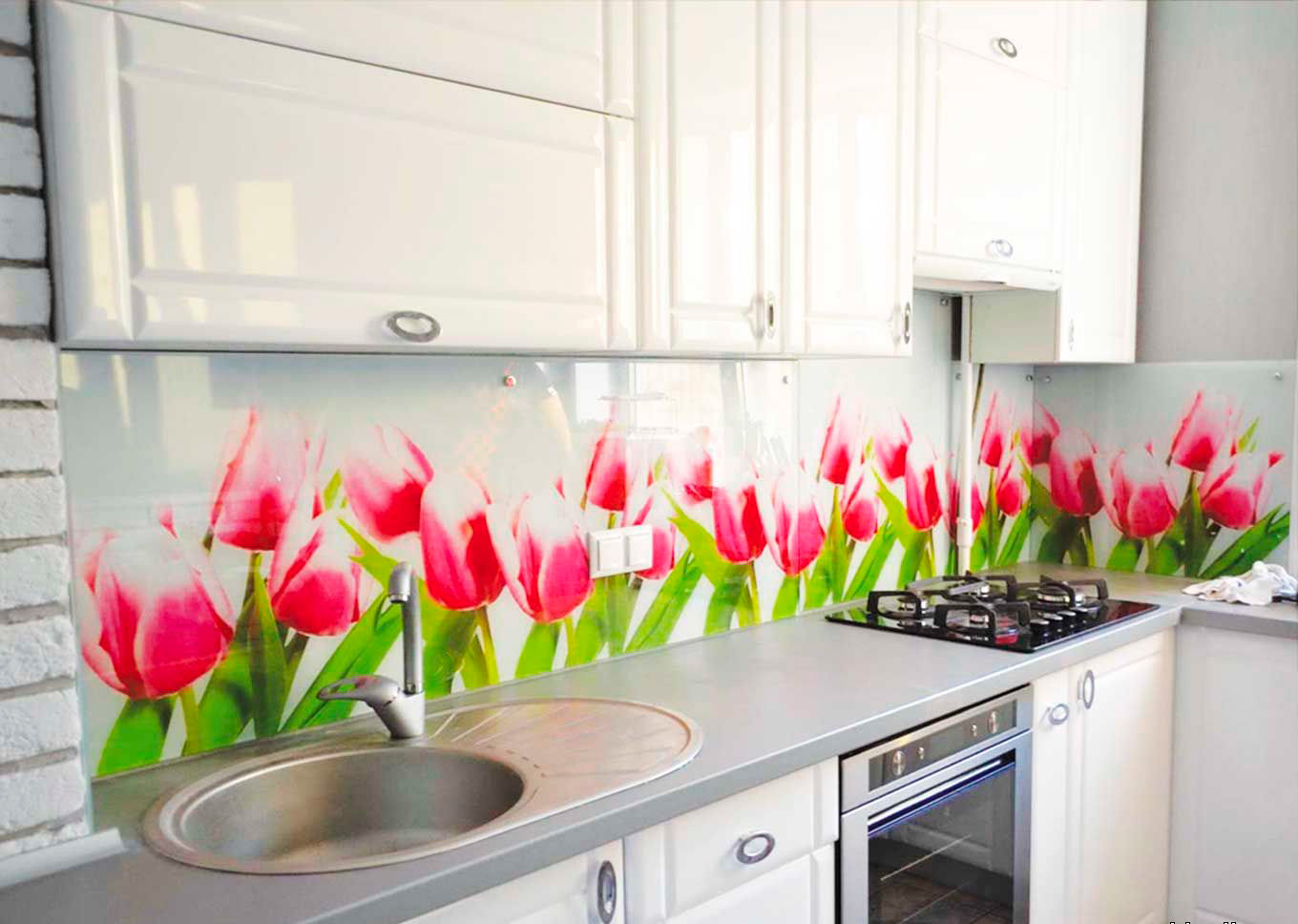
Triplex glass kitchen apron
6. Mirror. A glass apron in the kitchen in a mirror design is an unusual element. It erases spatial boundaries and creates the illusion of infinite spaciousness. Such a solution will appeal to expansive people who are ready to watch themselves doing any business, even such unsightly things as washing dishes, for example. This has become the main reason that in the decor of the working area, not full-length mirrors are often used, but mirror mosaics or tiles, the surface of which is sandblasted or partially matted.
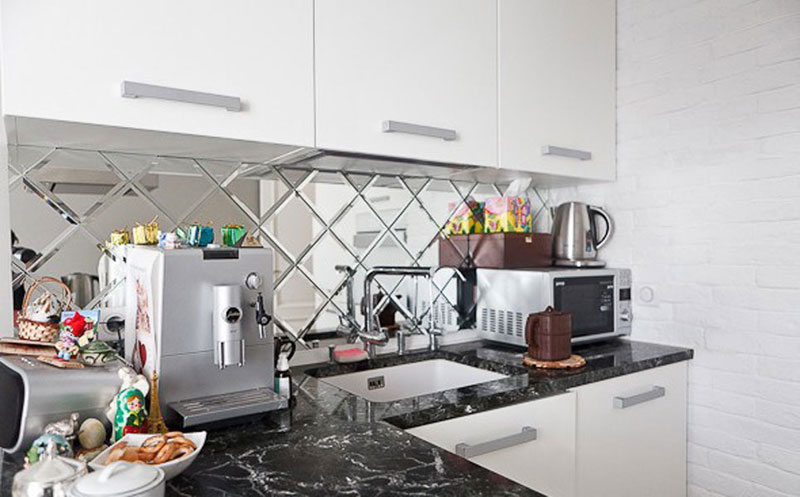
Mirror apron for the kitchen
Advice
An apron for a kitchen made of smooth glass is relevant for decorating small cramped rooms. The ability to unobtrusively reflect objects and the surrounding space allows you to create the illusion of the scale of the area. Glossy reflective surface, reflecting and scattering light fluxes, makes interior light and light.
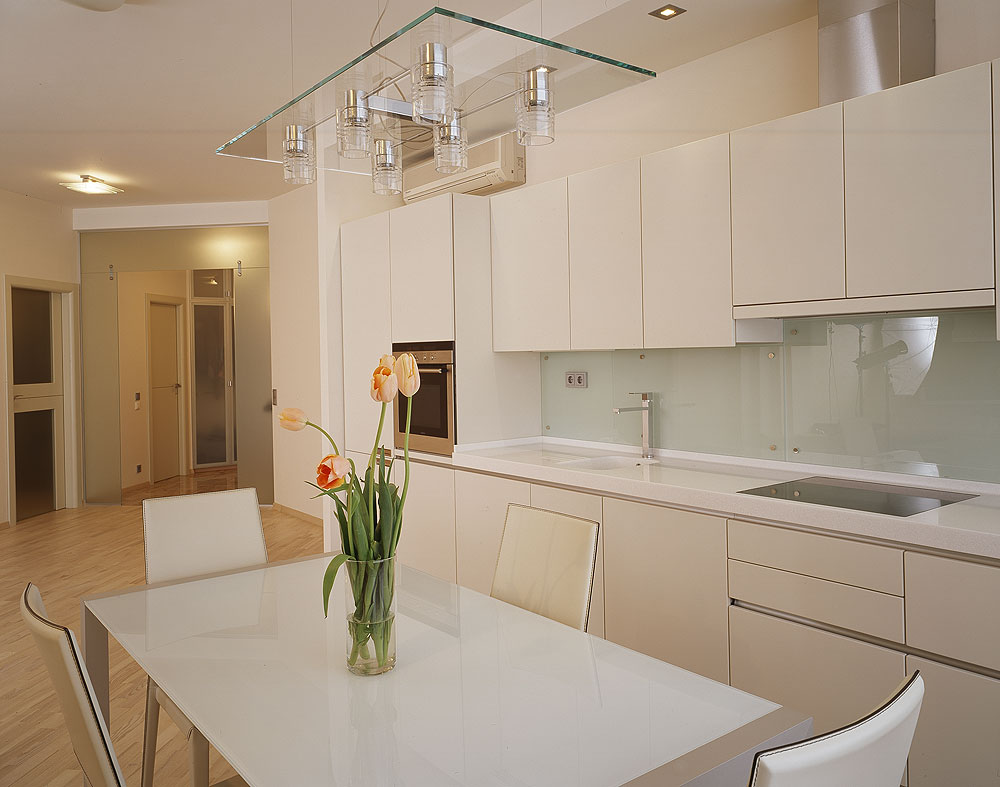
Glass apron will add light and lightness to the interior
To add perspective to a limited space, to make it deeper and deprive of borders, a picture with an urban plot will help.
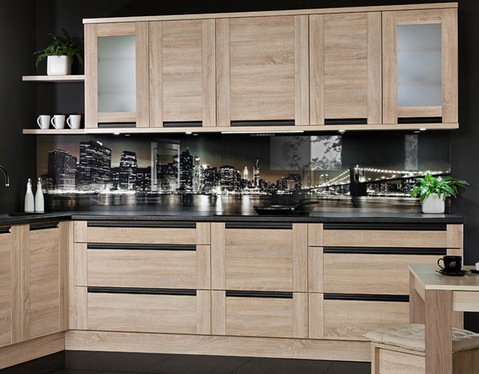
An urban backsplash adds depth to a space
Since the panels are made from high-strength material, you can not be afraid to use them in the smallest rooms. Even if they are subjected to frequent mechanical tests, their appearance, and hence the design of the kitchen as a whole, will not suffer.
Glass kitchen apron: installation subtleties
Making a working area with a glass apron does not take a lot of time. Its installation is experienced craftsmen in a couple of hours. The speed of installation and the absence of dirt favorably distinguishes work with glass panels from laying mosaics or tiles.
You can attach the apron to the wall in several ways:
1. Using fasteners.
This option is a priority, as it allows you to securely fix even panels of large weight and thickness. When choosing this method of fixation, there is no need for preliminary preparation walls for finishing. This refers to plastering and leveling work.
The use of fasteners makes it possible without problematic dismantling of the glass splashback in the kitchen, so that it can be easily removed for the duration of the current repair.
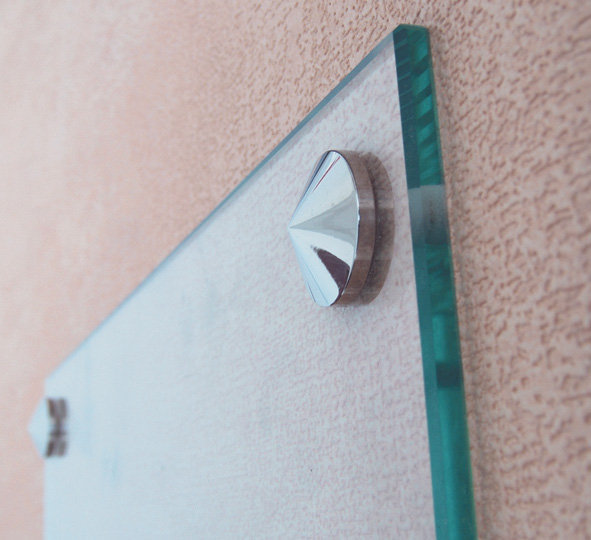
Fasteners for glass apron
The method of attaching the skinali can be hinged or through. Elements of hinged fasteners are in the form of centimeter-sized metal hook plates. The glass panel is simply inserted into them and clamped securely. The plates are hardly noticeable and do not spoil the overall impression of the decor. This method is especially relevant when installing an apron-puzzle, consisting of separate fragments.
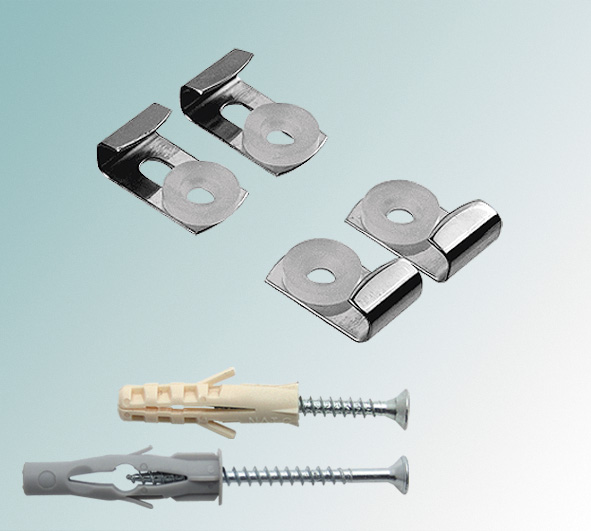
Hanging fasteners for an apron
If you plan to pass through the fastening method, then you need to drill holes for the screws in the apron for the glass kitchen even before it is hardened. Otherwise, it will be impossible to screw them. So that the fastener caps do not spoil the appearance of the panel, they are hidden under special caps.
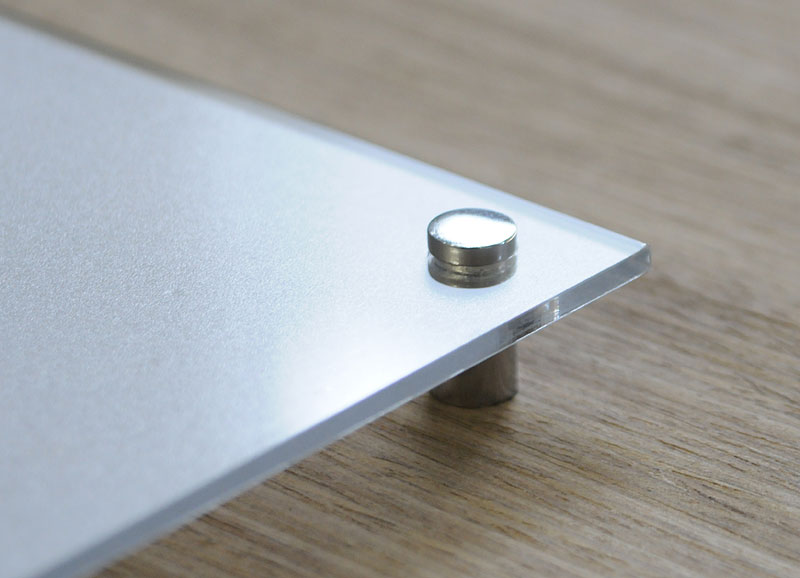
Fastener for apron
The advantages of using metal fasteners are that they allow you not to prepare the wall surface for a new type of decoration at all. The apron can be installed directly on the tile that has lost its relevance or other existing finishes.
2. Applying liquid nails or other adhesives.
This method involves gluing the apron panel to the wall. Here it is important to properly prepare the area to be trimmed. The wall must be well aligned. Installation is carried out on a dry and dust-free surface. After installation, the butt part was skinned in the area of \u200b\u200bthe apron and the countertops are masked with a wall ledge.
It would seem easier to put a glass apron on glue: there is no need to drill walls and adjust fasteners, however, from the point of view of reliability, this method clearly loses. It is not suitable for massive panels.

Installation of an apron on liquid nails
When assembling decor from separate parts it is very important to carefully match them. It is necessary to mount a prefabricated apron for the kitchen from glass fragments so that there are no large gaps and cracks. Joints pass silicone sealant. This will serve as a prevention of settling them with fungal colonies. The thinnest layer the insulator will not be noticeable during neatly done work.
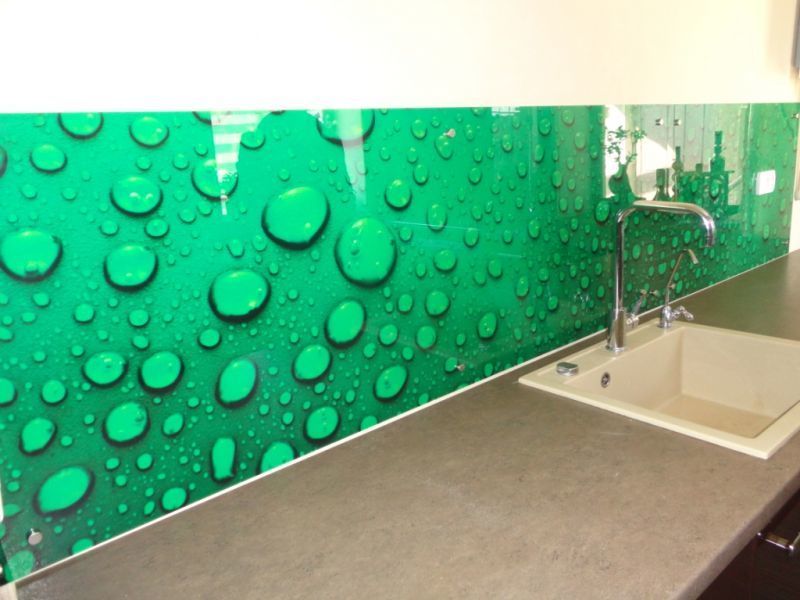
Treat the joints on the apron with sealant
If you plan to order installation from the manufacturer, then you should ask if the cost of services includes work on leveling the wall, installing fittings and additional accessories like lighting, roof rails, skirting boards and more. If not, then these works will have to be done independently or paid extra for them on a separate account.
In principle, the installation of a glass apron on standard kitchen with even walls that do not have ledges and niches (with experience in handling glass), it is easy to do it yourself.
Illuminated glass kitchen apron
Properly organized lighting will help to add additional attractiveness to the working area decorated with a glass apron. It is allowed mainly along the perimeter of the panel, less often it is equipped inside it. The light source is LED Strip Light. Its power is enough to illuminate the surface of the skins and illuminate the countertops. LED strip can be:
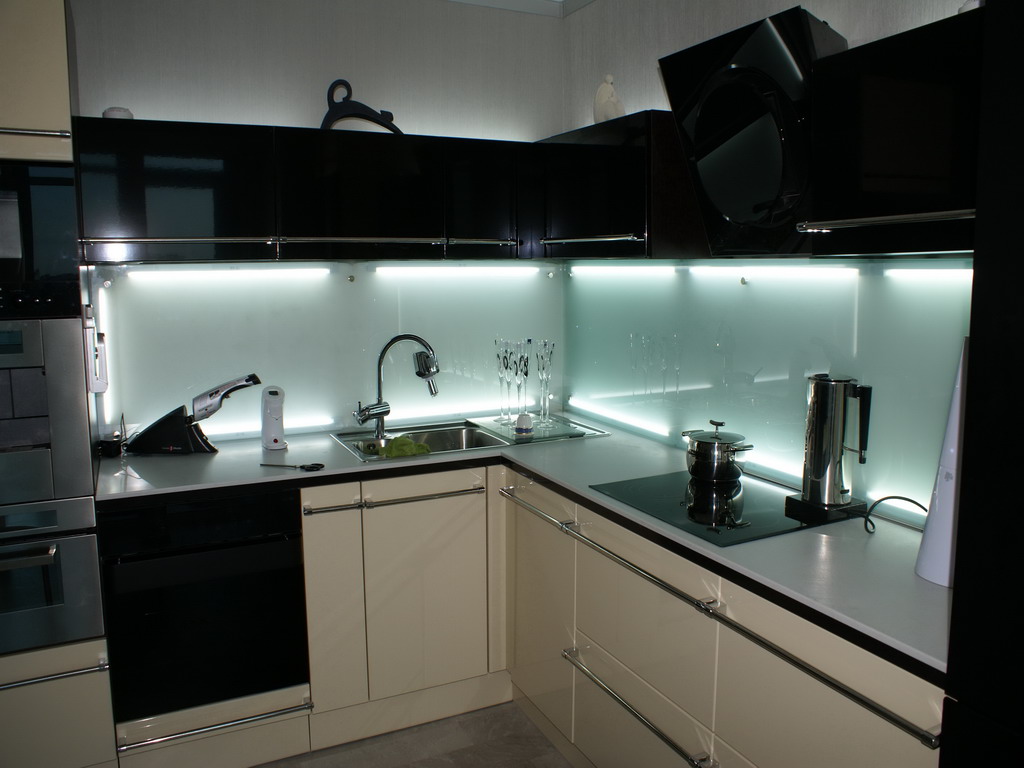
White apron lighting for the kitchen made of glass
2. Color (RGB).

Colored lighting for a glass kitchen apron
Color is more interesting for interior solutions, as it allows you to change the shades of the emitted light in accordance with the situation and mood.
On an apron for a glass kitchen, the backlight can be started from the end side or started from the back. In the first case, the tape is attached to the sides of the glass panel (usually along the long sides) hiding it in aluminum profile type OLIVET, where channels are provided for embedding LED strips and wires. The profile is miniature and does not hurt the eyes. Moreover, its shape is thought out so that they can mask the attachment points of the apron.
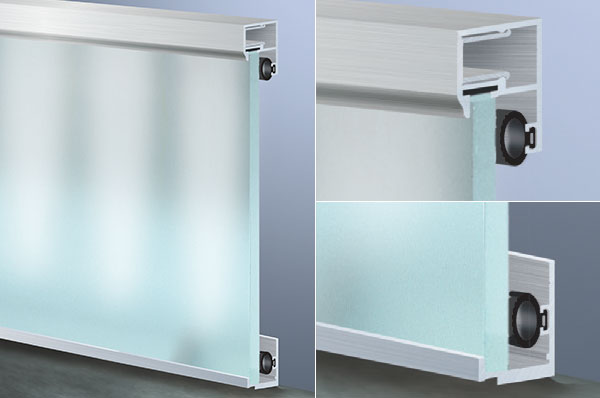
Profile for OLIVET apron
From color solutions available:
1. Champagne.
2. Gold.
3. Cognac.
4. Silver.
In the configuration of the profile there are seals with which you can close the joint of the countertop with the apron. This eliminates the need to purchase a special plinth. The solution for organizing the backlight is expensive, but whether it should be attributed to the disadvantages is a question.
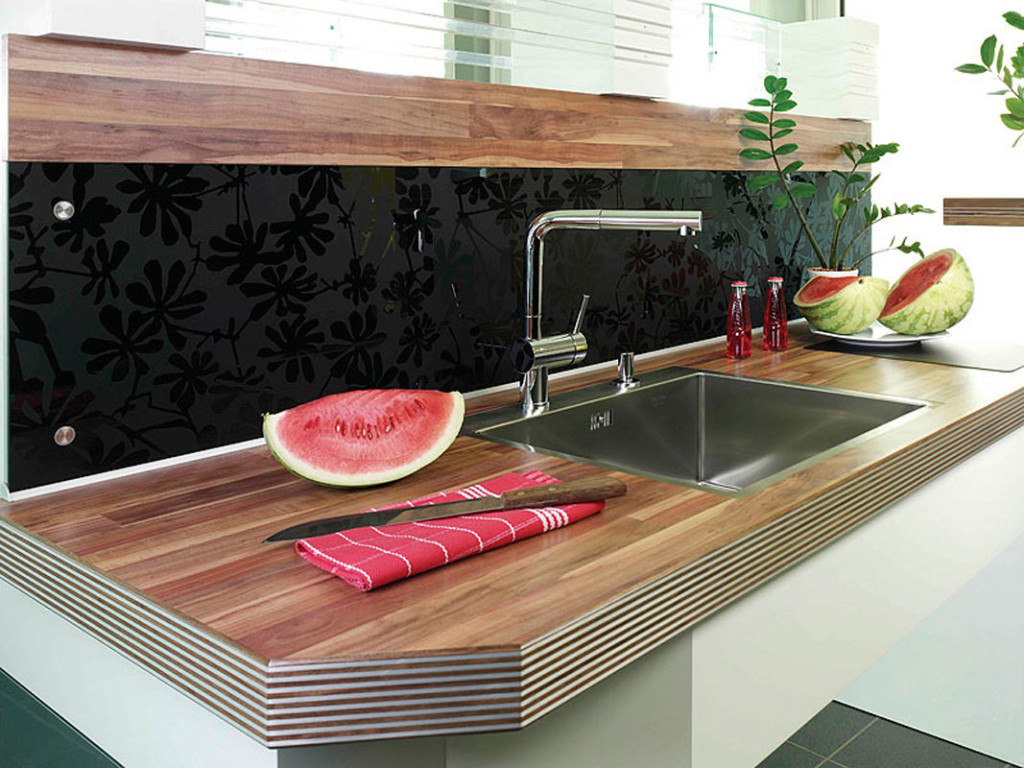
Sealant for apron and countertop joints
To organize lighting from the back, a glass apron in the kitchen must be installed at some distance from the wall. An LED strip is inserted into the resulting gap or niches are made in the wall for LED lamps. The complexity of this method lies in obtaining the effect of uniform illumination of skins with diffused light. The technology is cheap, but not loved by professionals because of the problems described above, although in terms of decoration it is in no way inferior to the first option.
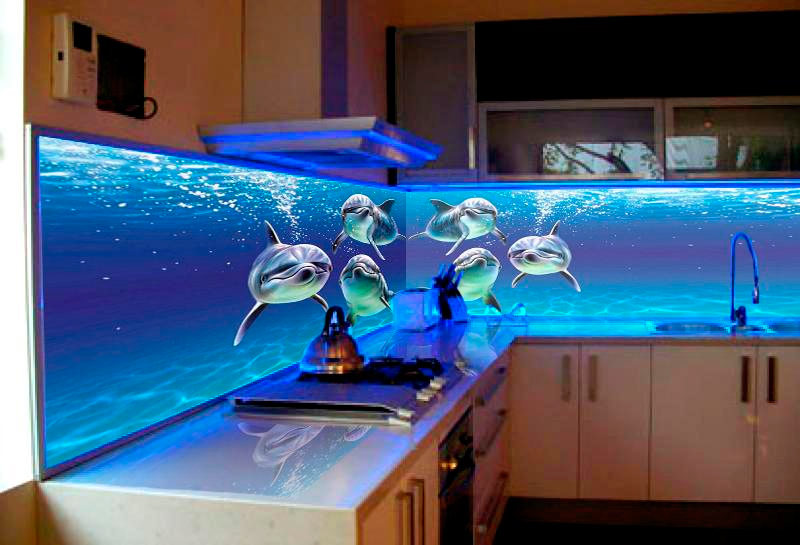
LED backlight glass apron
Dimensions of the glass apron
IN standard form the panel can have a height in the range of 40 - 90 centimeters. There are restrictions on length. It can be made no more than 2.5 meters. To decorate large spaces, glass kitchen aprons are made prefabricated. Butt joints are easily masked, so that the surface is perceived as a whole.
How much does a glass apron cost
Price finished product depends on various factors:
1. Type of construction (solid or composite).
2. The type of glass used in the manufacture.
3. Decoration method.
4. Mounting options.
5. Installation difficulties (the presence of beveled corners, ledges, niches).
6. The need for additional design work.
You can make a preliminary calculation of the order using the calculator available on many websites of companies of this profile. Naturally, everything will be adjusted during the preparation of the application, but you can still get a rough idea of \u200b\u200bthe upcoming costs.

Example online calculator calculating the cost of an apron for the kitchen
The most expensive glass aprons for the kitchen are made from Optiwhite and decorated with a 3D pattern.
Lead times vary from 10 to 15 days.
In addition to the fact that panel manufacturing is paid for, many companies have a list of additional paid services, which includes:
1. Trying on the product in place.
2. Color proofs.
3. Development of an individual layout.
4. Additional processing drawing by the designer.
5. Using a photo bank.
Almost all manufacturers advise applying on an apron additional protection in the form of a color or colorless film. It should be clarified whether it is necessary to pay for this service or is it a bonus for the order.
Examples of what a glass apron might look like in kitchen interior can be viewed in the photo galleries.
Let's summarize the information
"An apron for a kitchen made of any type of glass is not a cheap pleasure"
The glass used for the production of kitchen aprons goes through a tempering process, which gives it the required strength. It is impossible to cut such a product, so it is important to initially imagine correct dimensions and indicate the installation locations of sockets and other accessories, including fasteners, if the option of through fixation is expected. An apron for the kitchen of any type of glass is not a cheap pleasure. It is not worth the risk, saving on the departure of the measurer. In case of non-condition, you will have someone to make a claim.
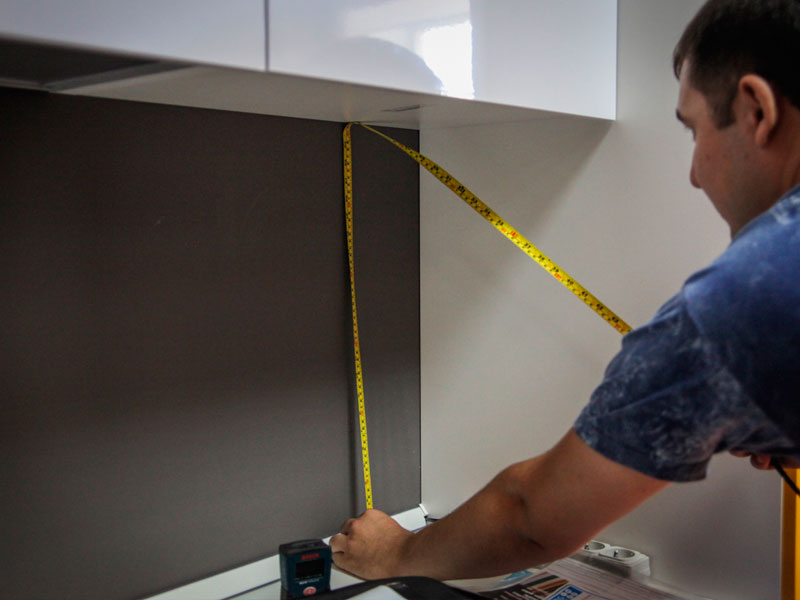
It is important to take measurements for the apron correctly
For those who are extremely concerned about the safety or durability of the finishing of the work area, there are best option solution of the issue in the form of a special type of glass - triplex. The layering of the product (as already mentioned, such an apron is assembled from two identical panels, between which the pattern is sealed) guarantees its double strength and complete protection of the decorative part.
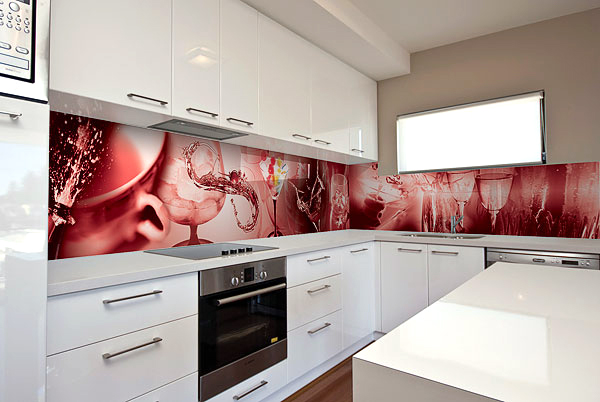
Triplex kitchen apron is particularly durable
When planning to order a glass apron for the kitchen, do not forget that the installation of an apron is not only its production. The concept includes the services of a measurer, the price of the material, the creation of a design layout, the cost of hardening and the decor method, the arrangement of the backlight, the application of a protective layer and, finally, delivery. When discussing the nuances of the transaction with the manager, it is necessary to clarify what is done for a fee from this list in order to finishing stage there were no "surprises" for exorbitant surcharges.
Conclusion
Glass kitchen apron - simplest way make it practical and comfortable. This is a magical element that can push walls apart and fill the space with a unique atmosphere. original design work area can be a global step towards the kitchen of your dreams. Make it, and reality will exceed all expectations!
Photo gallery - glass kitchen apron
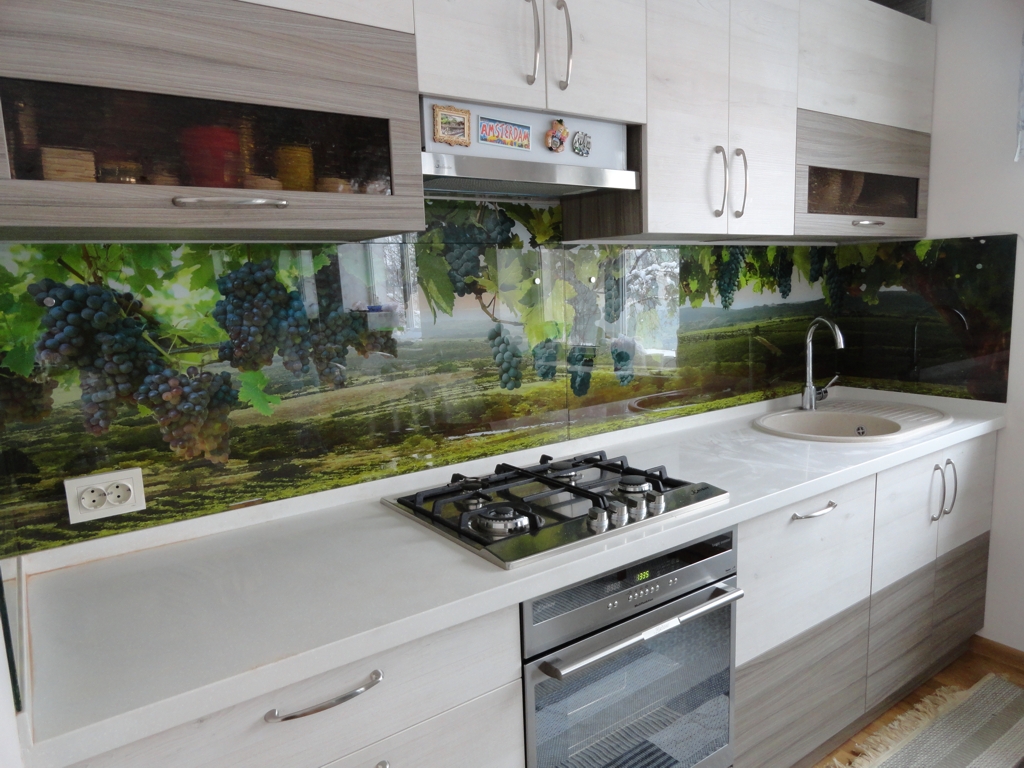
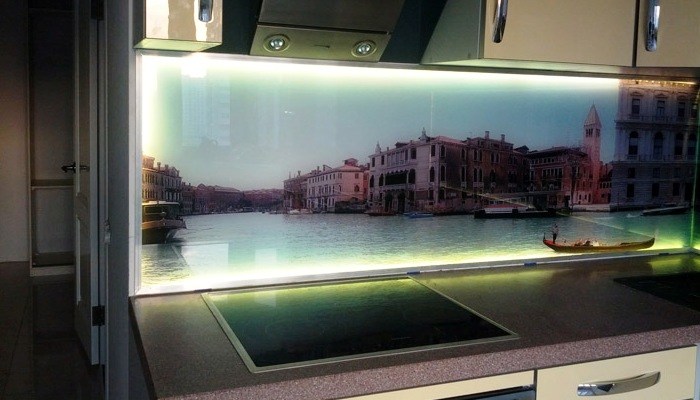

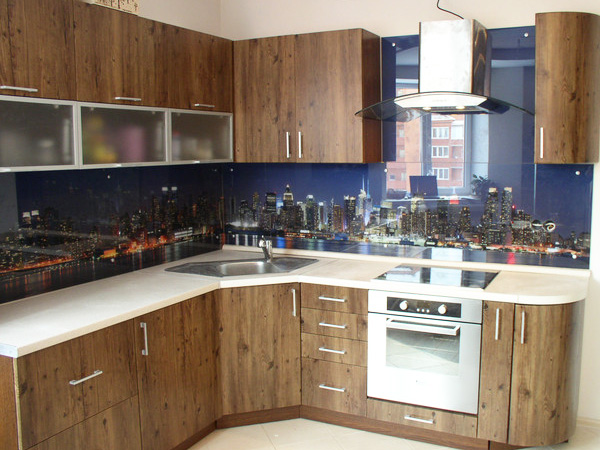
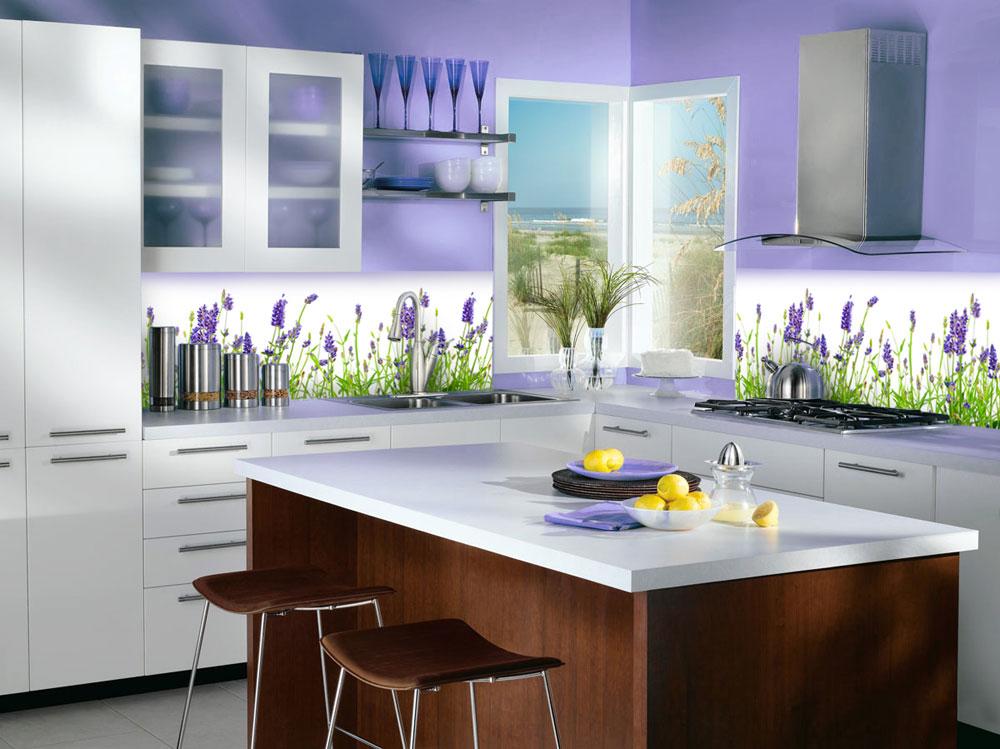
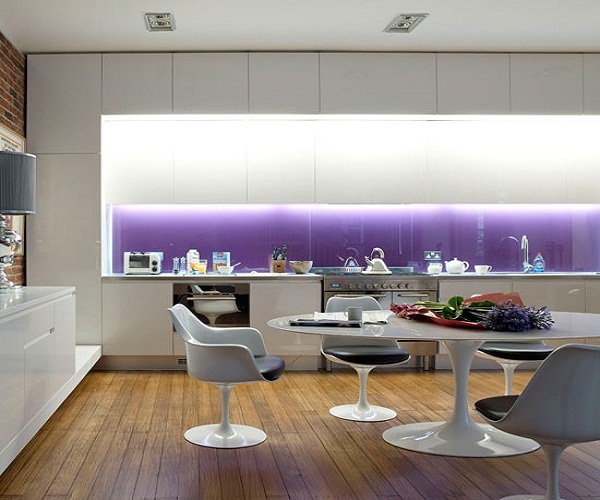
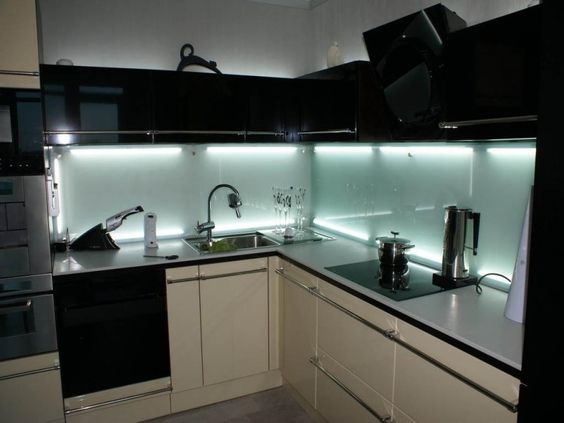
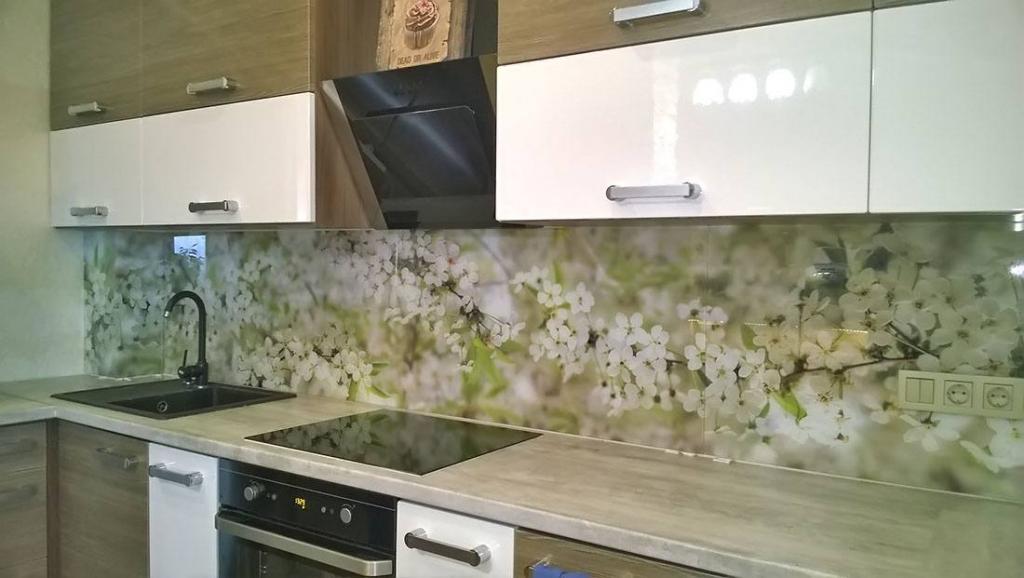
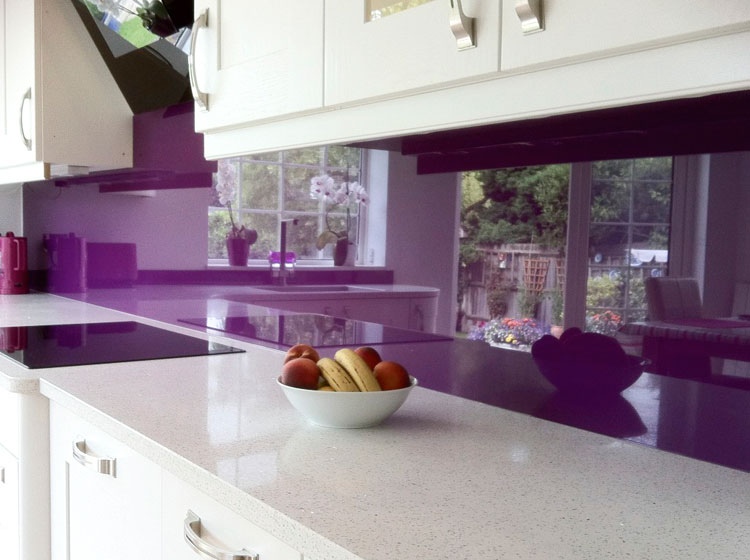
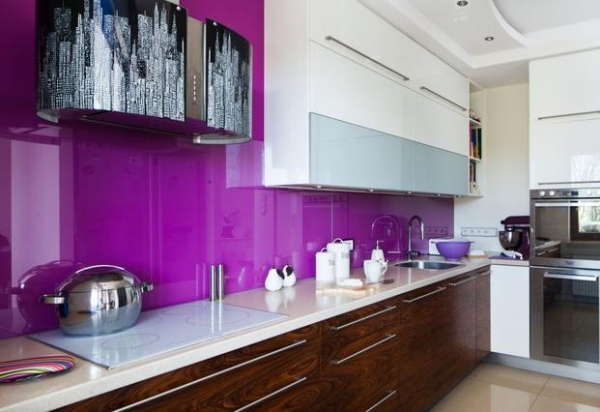
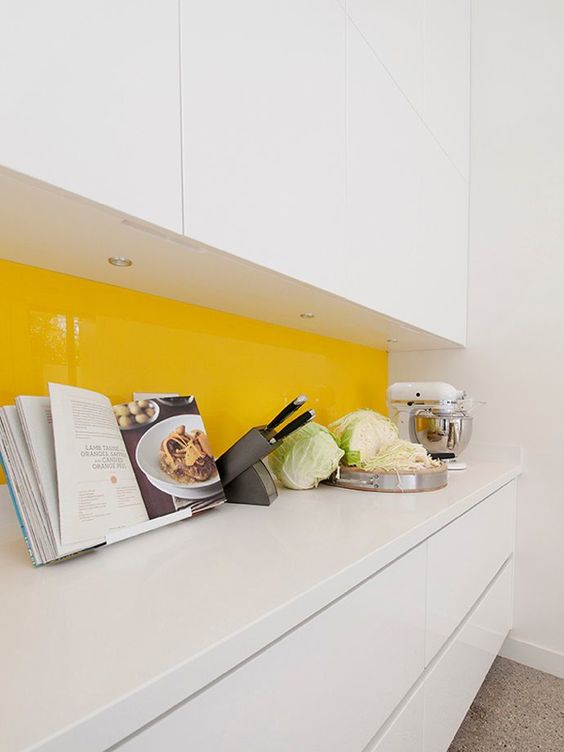
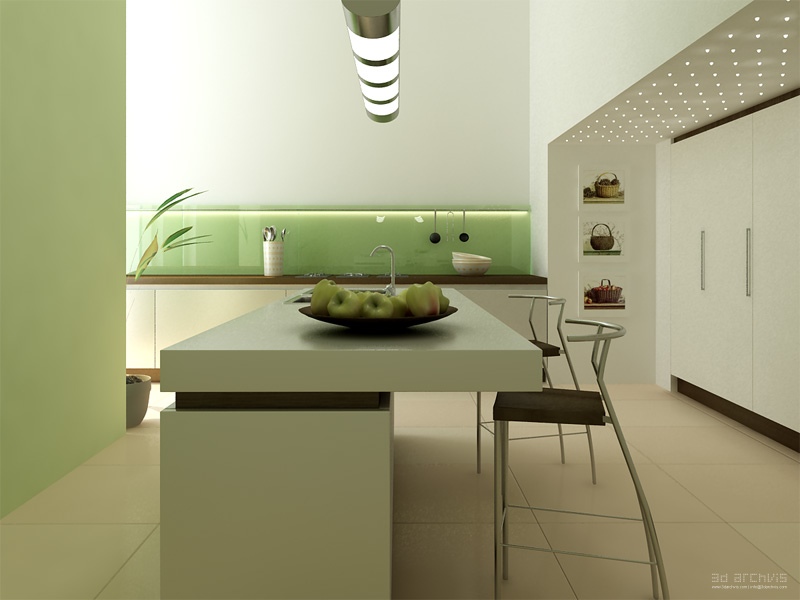
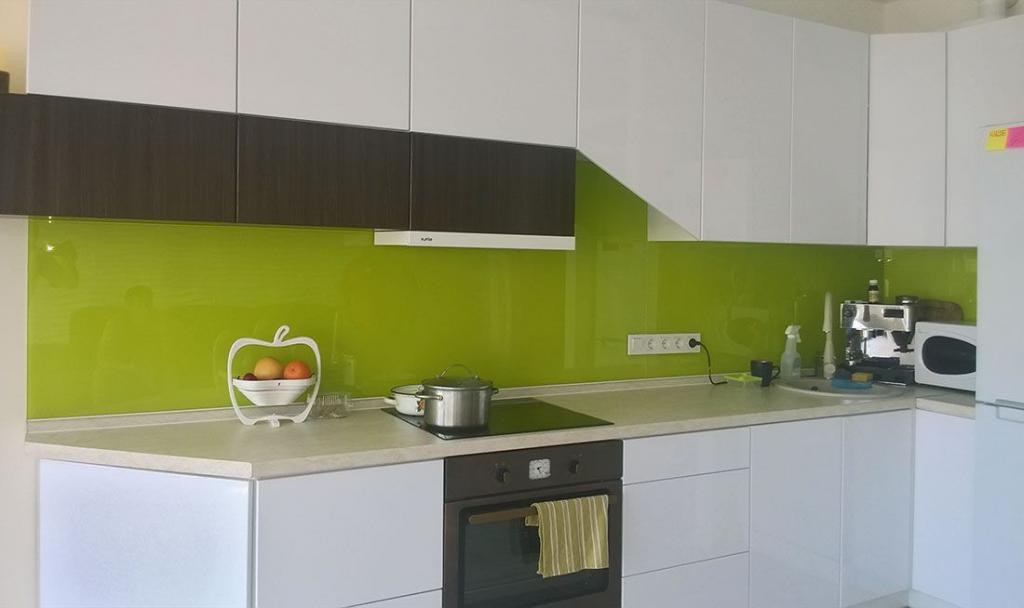
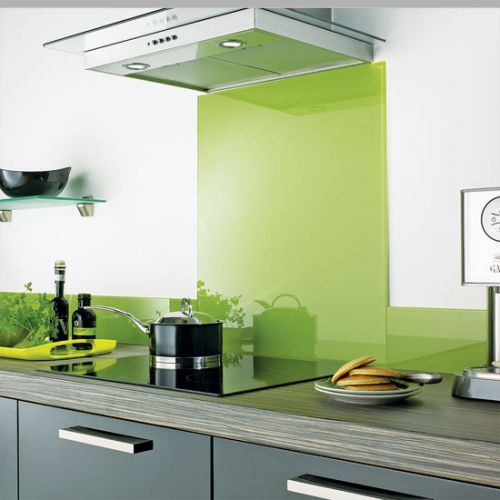

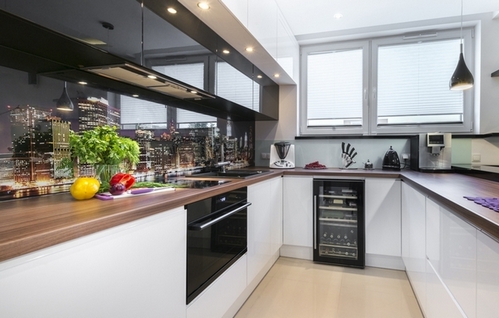
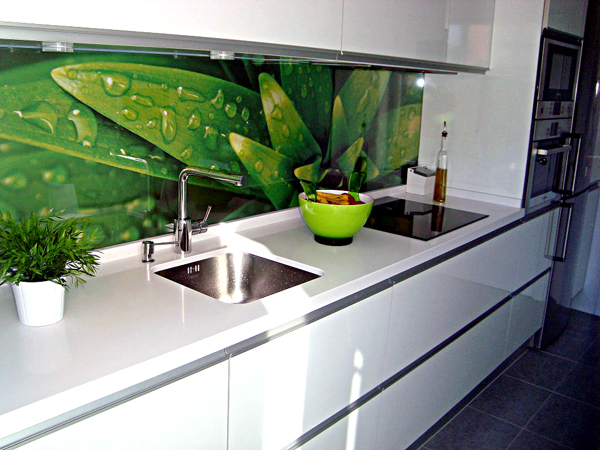
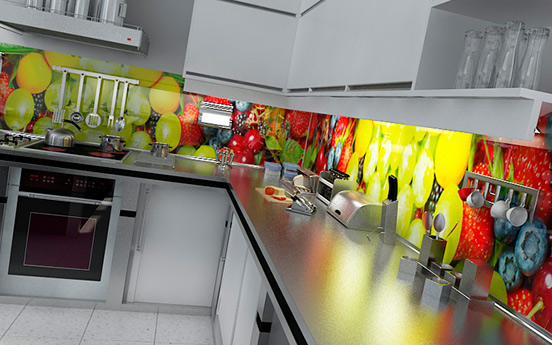

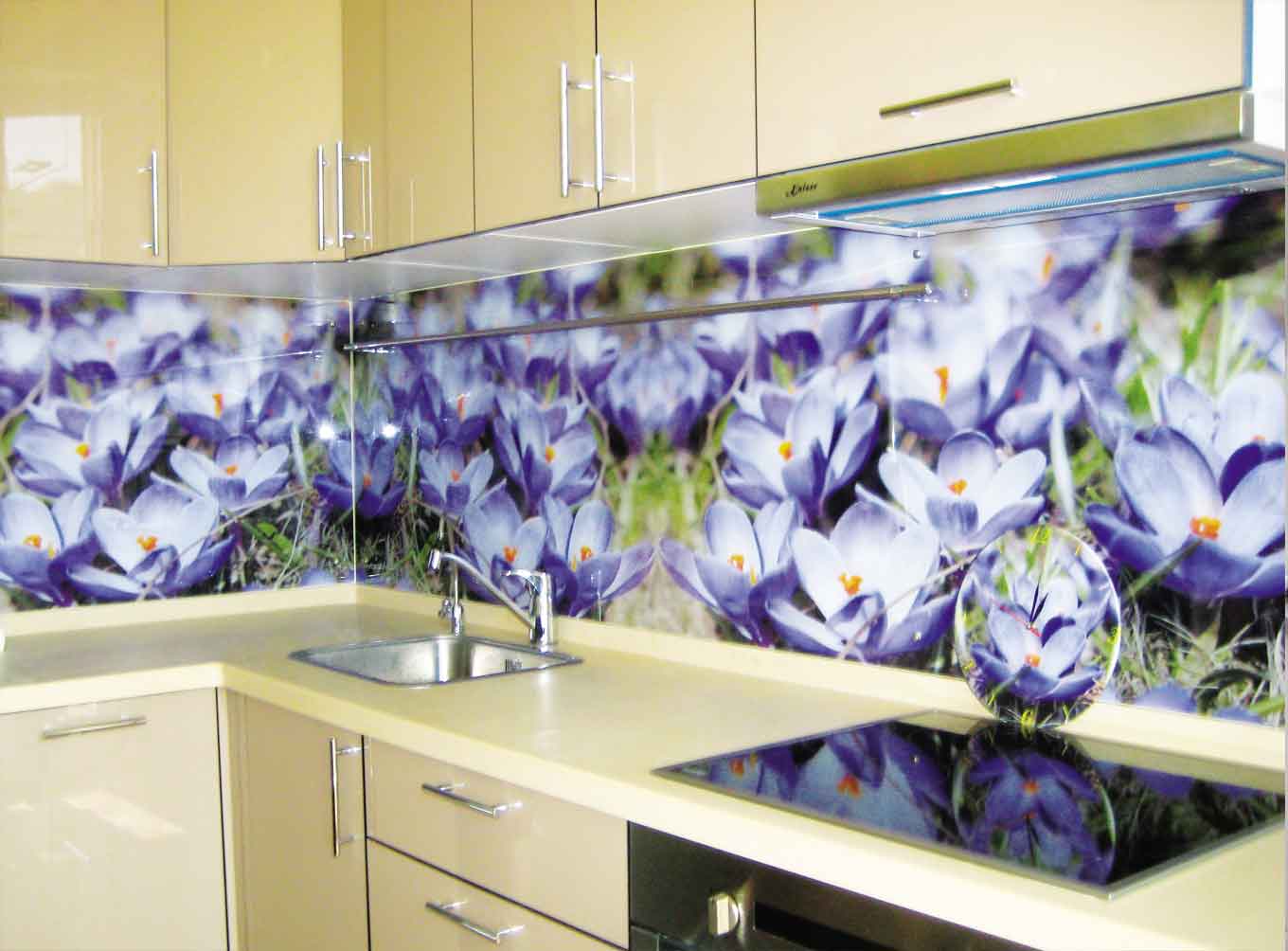
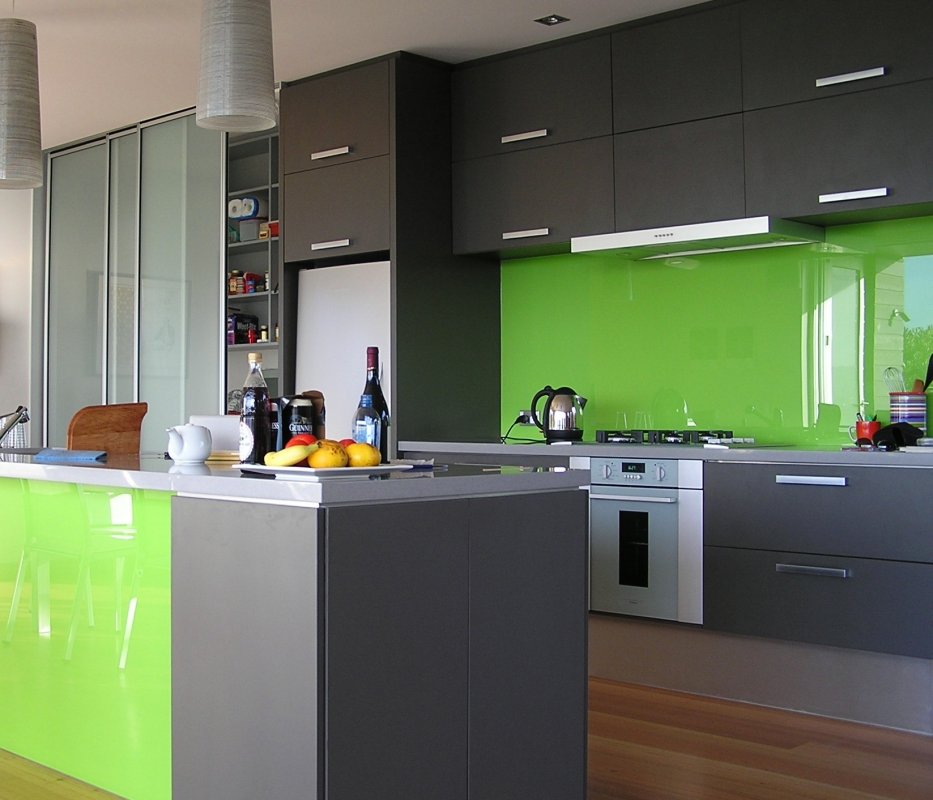
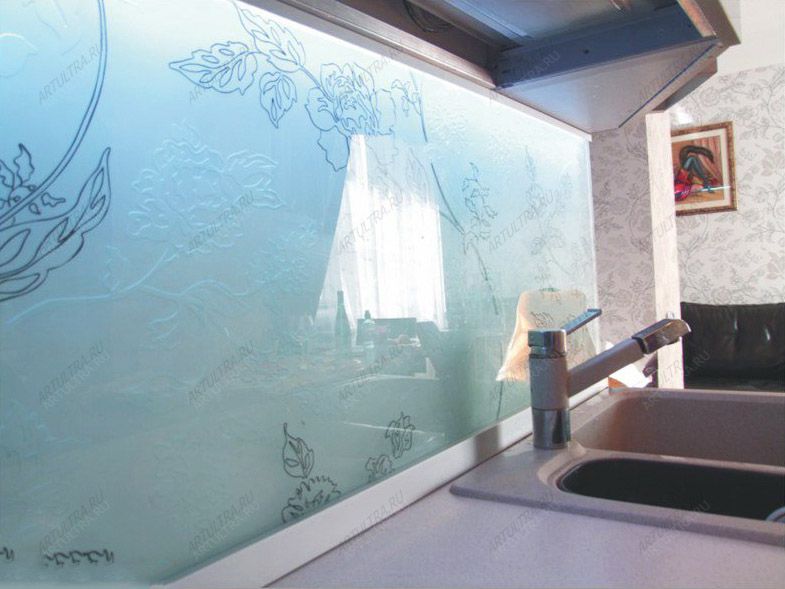
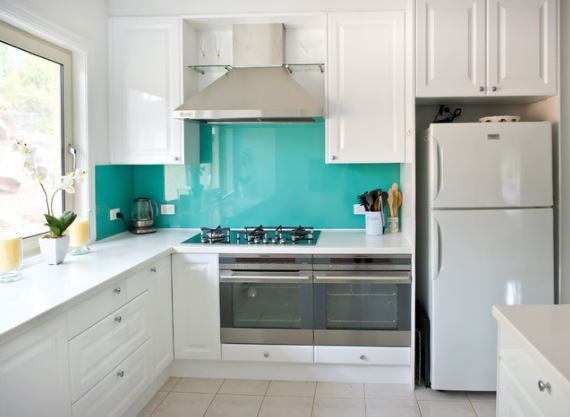
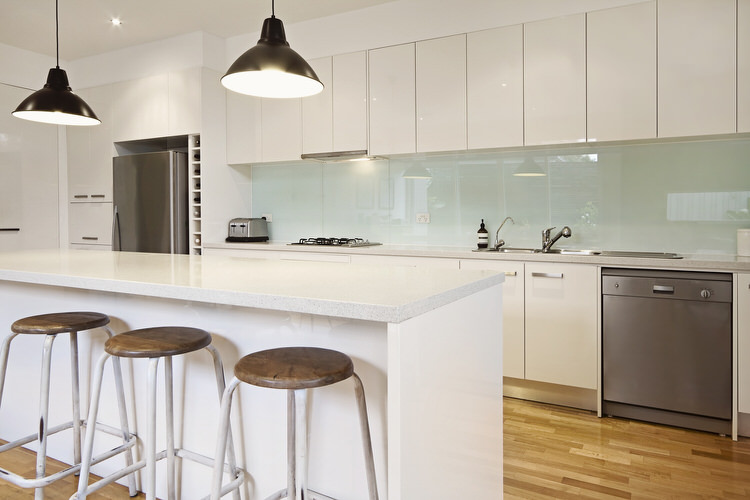
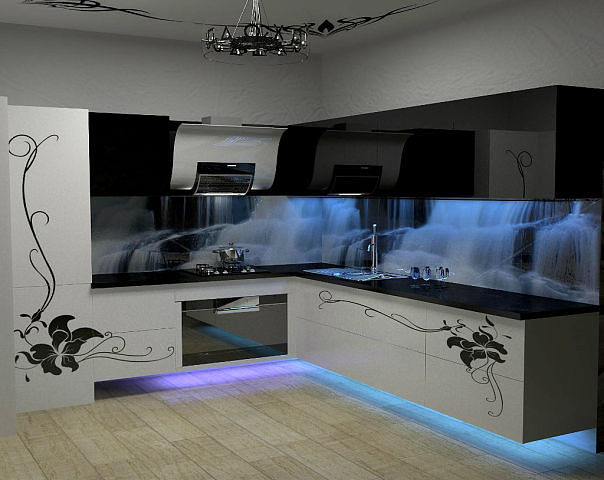
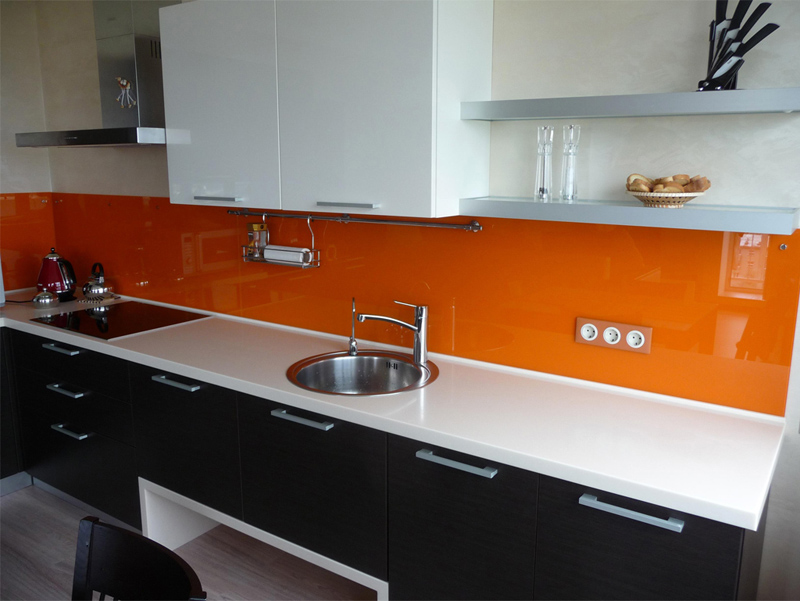
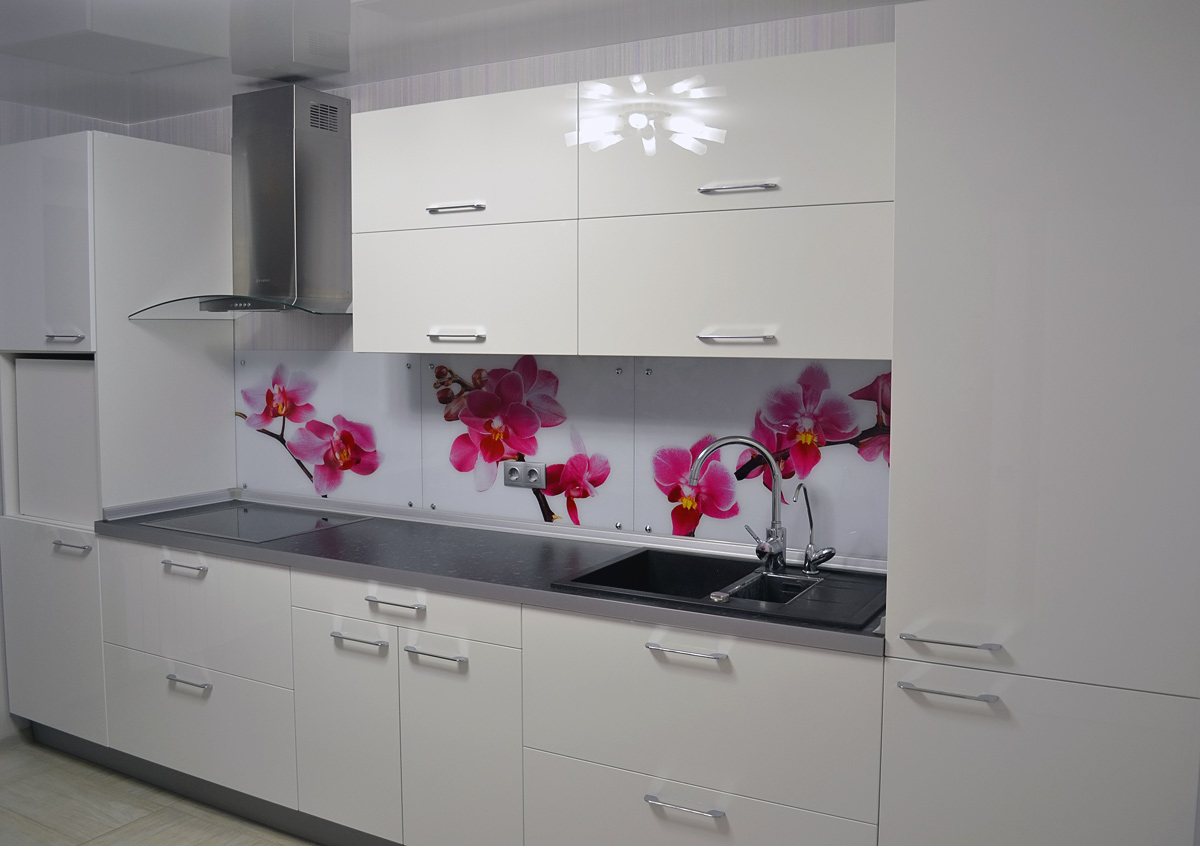
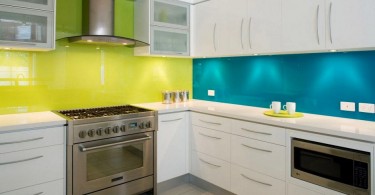
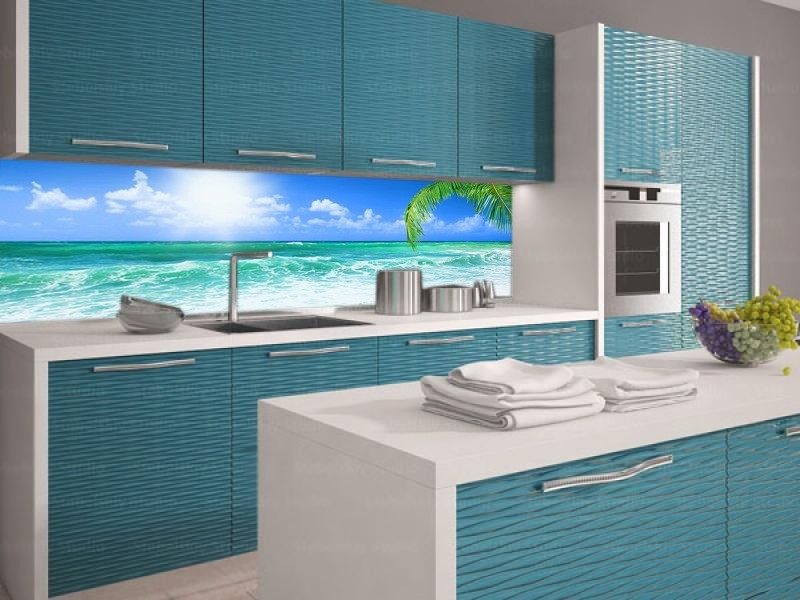
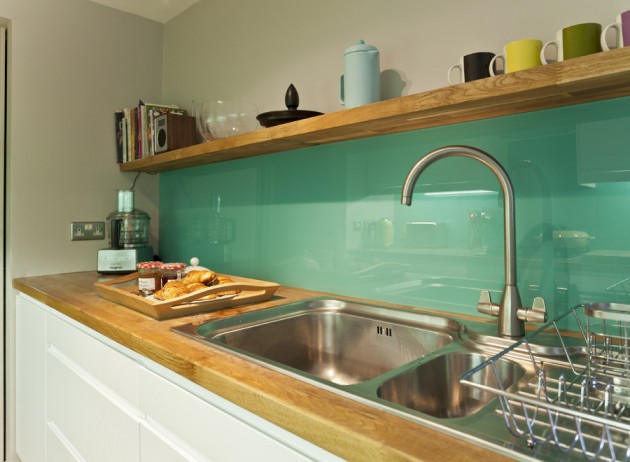
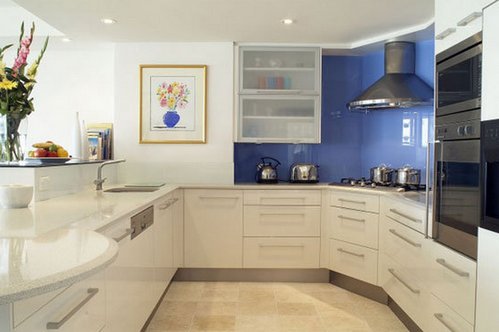
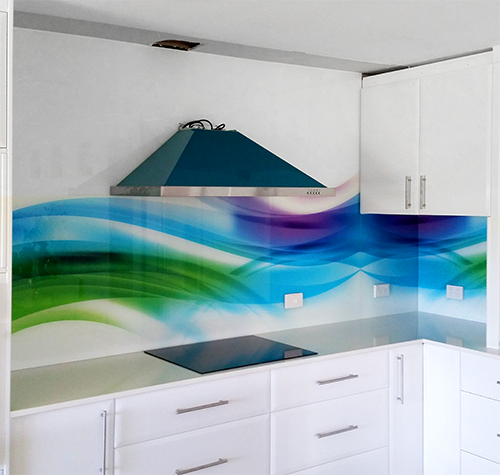
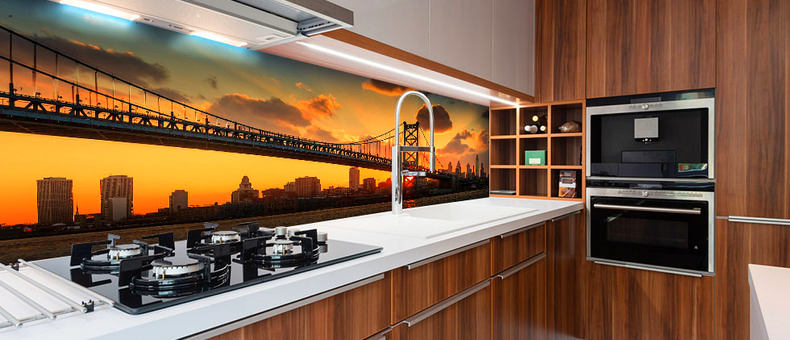
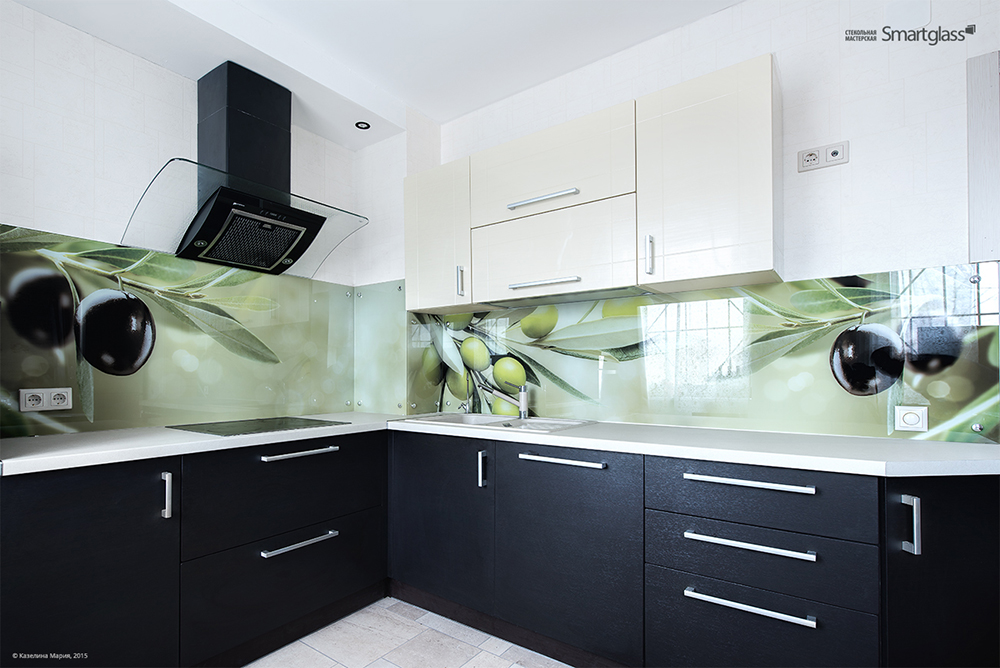
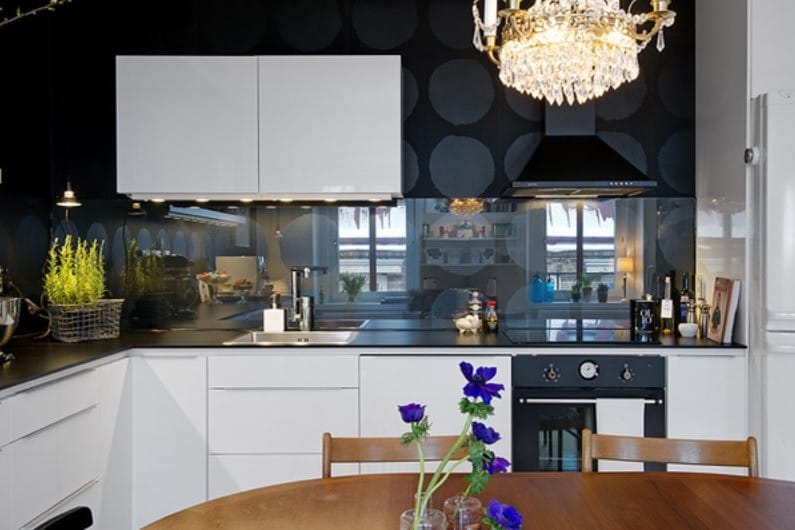
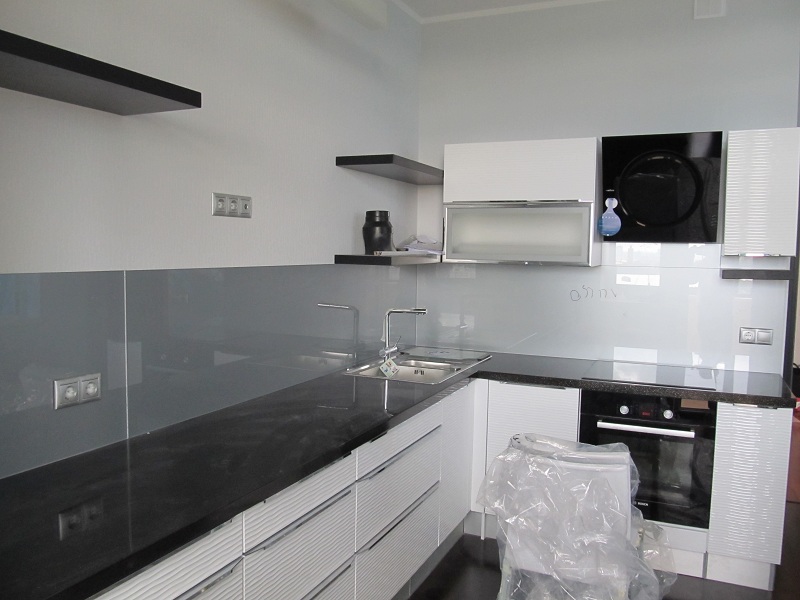
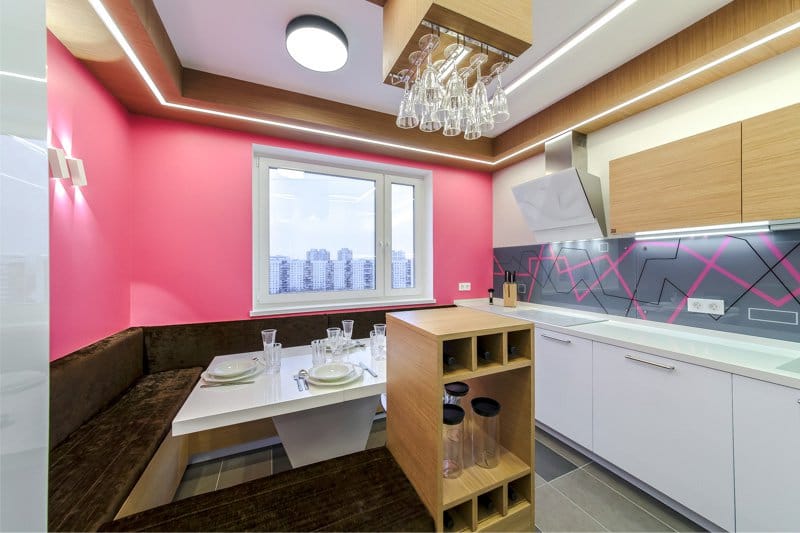
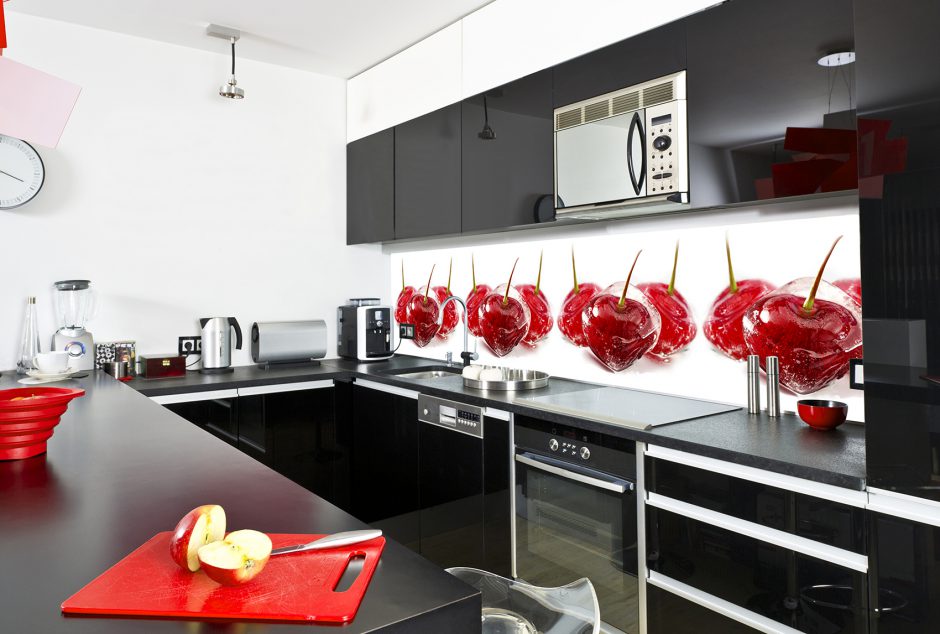
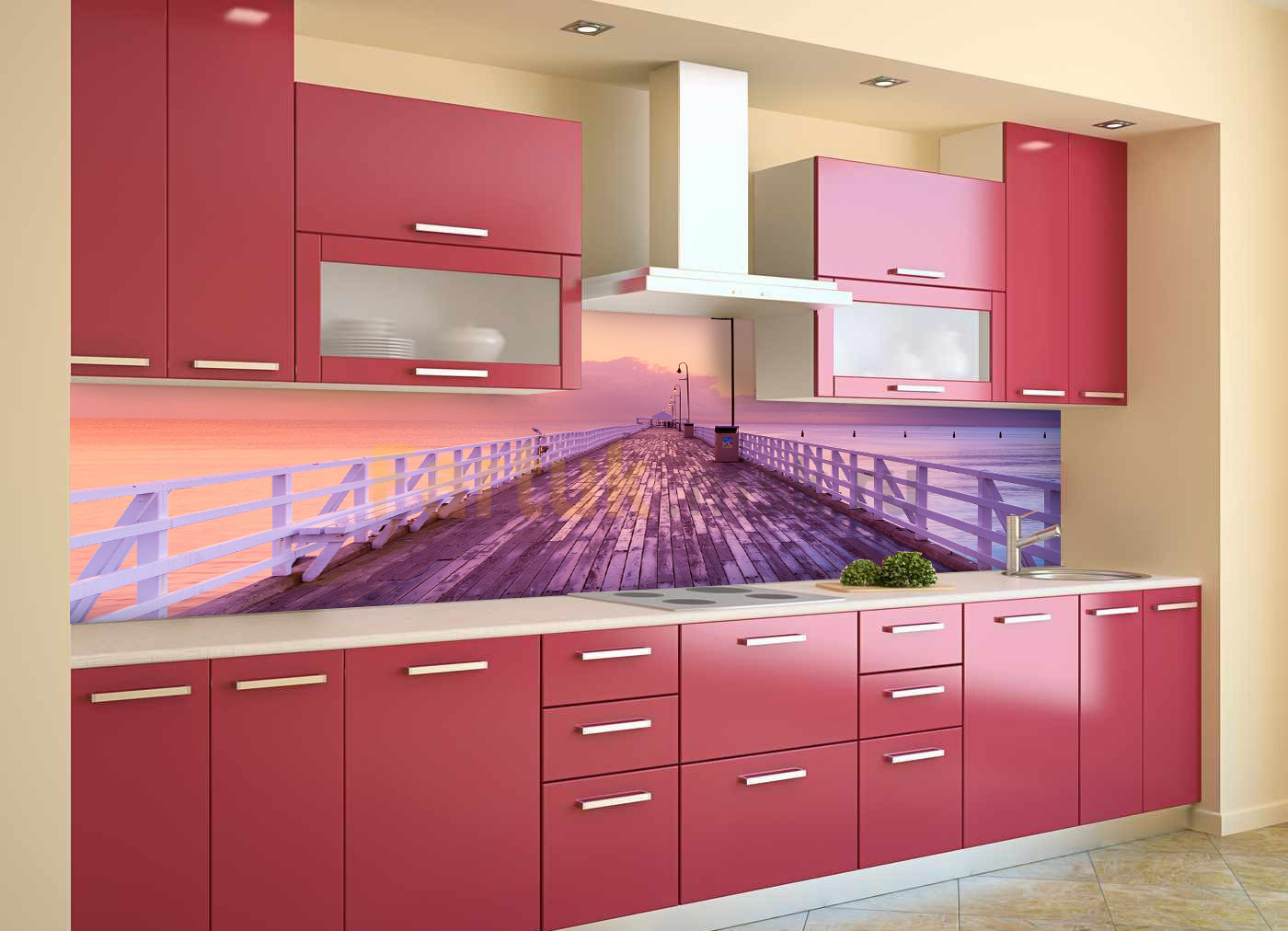
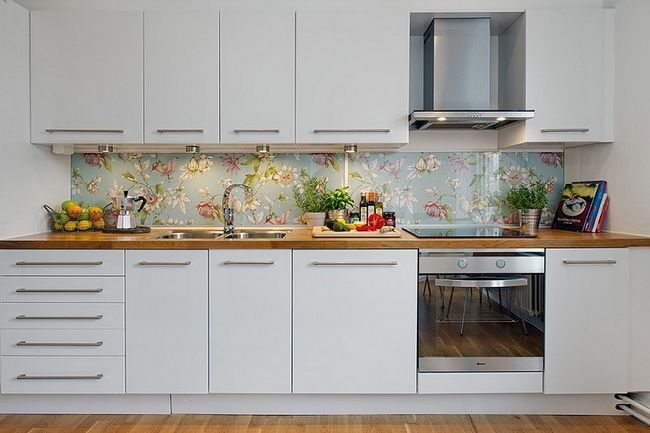
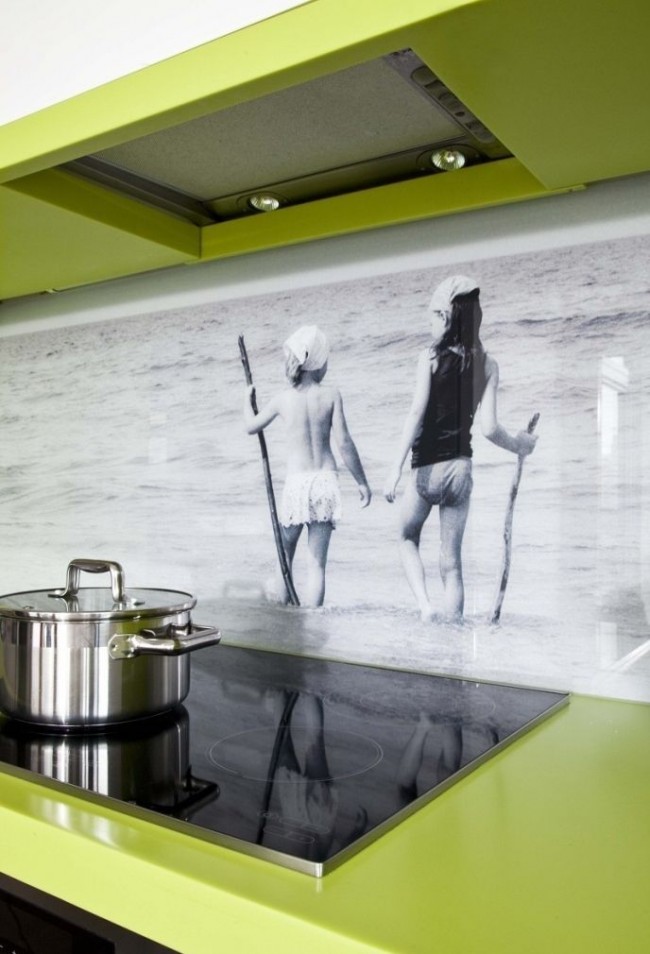


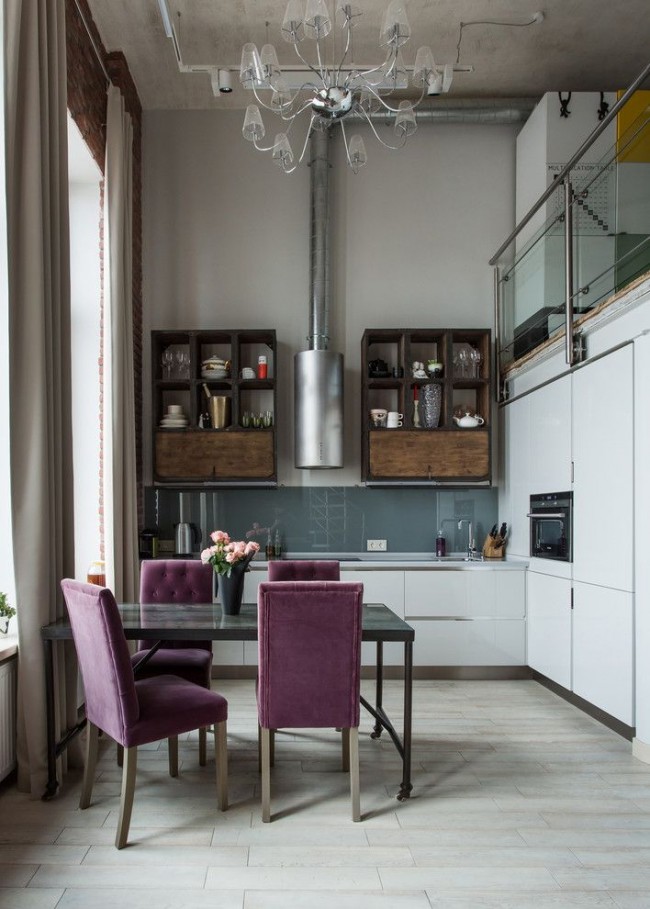
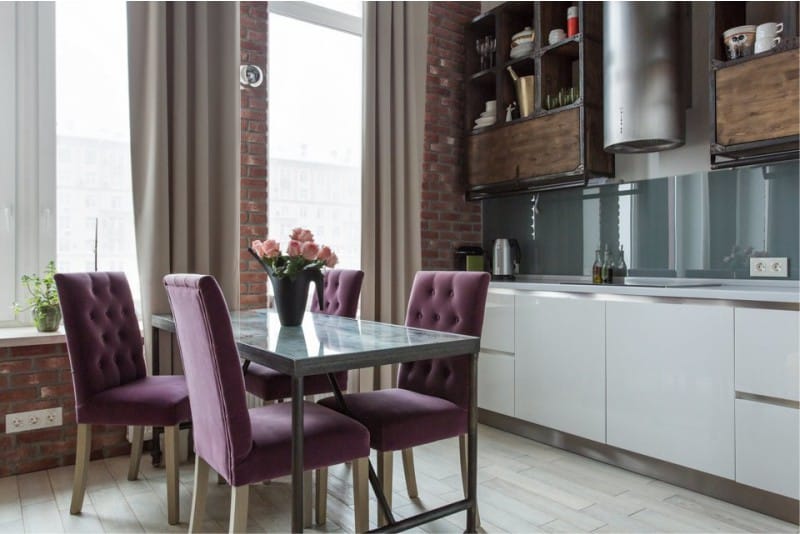
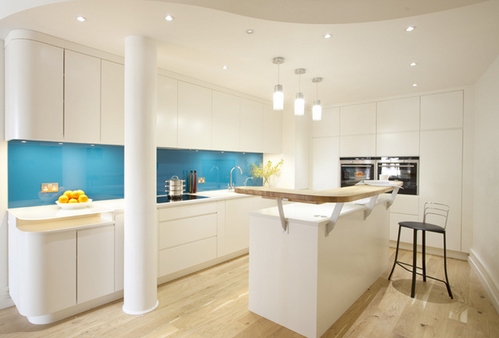
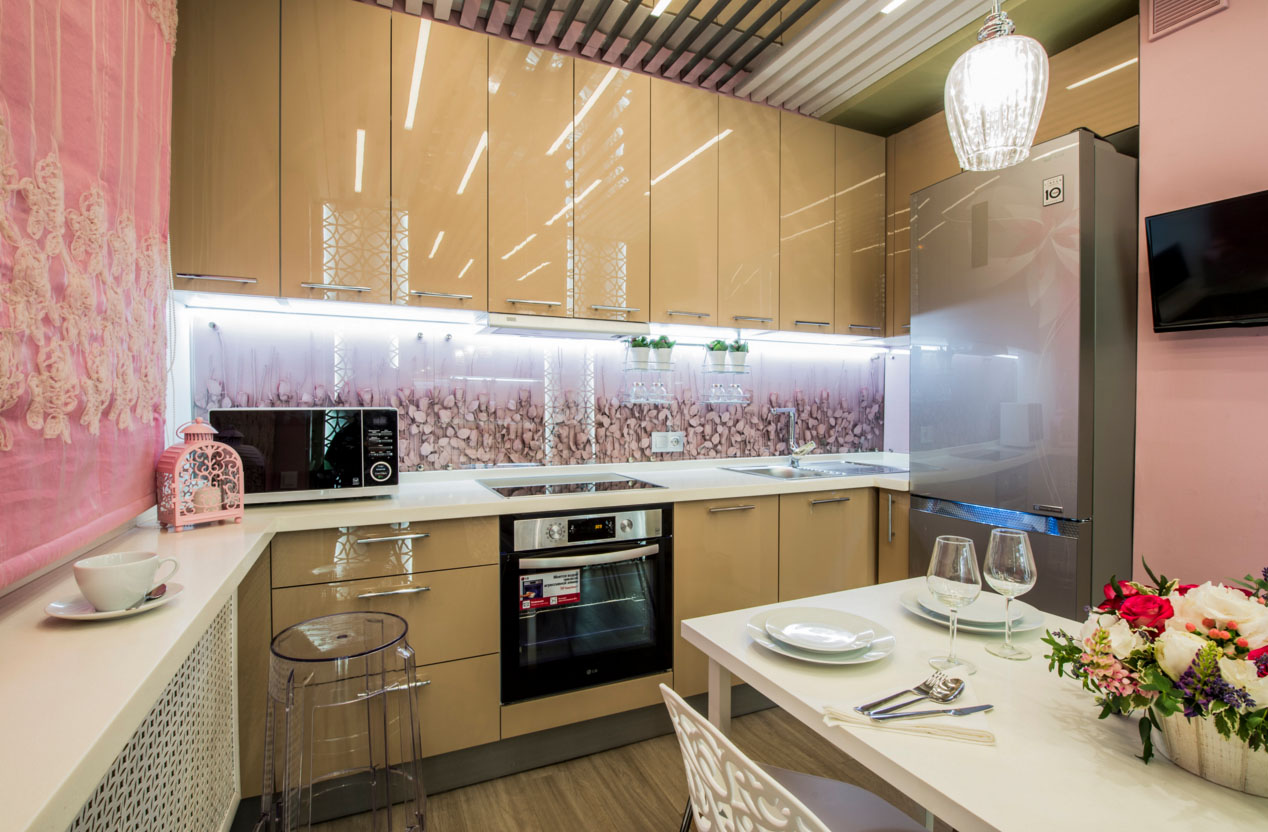
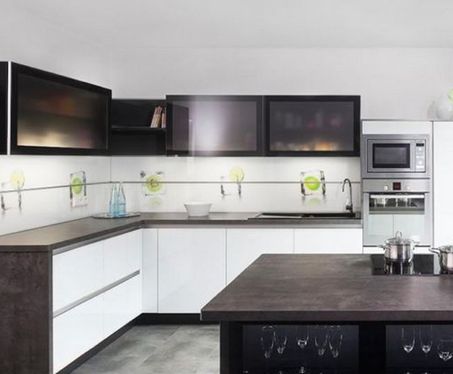
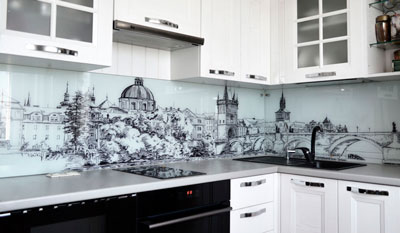
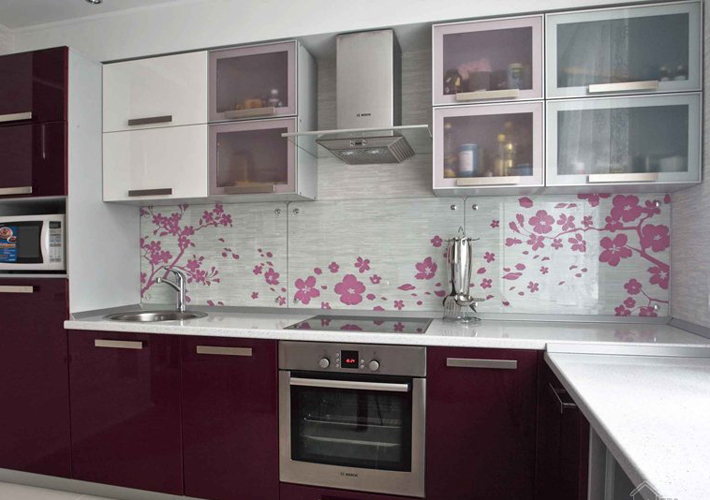
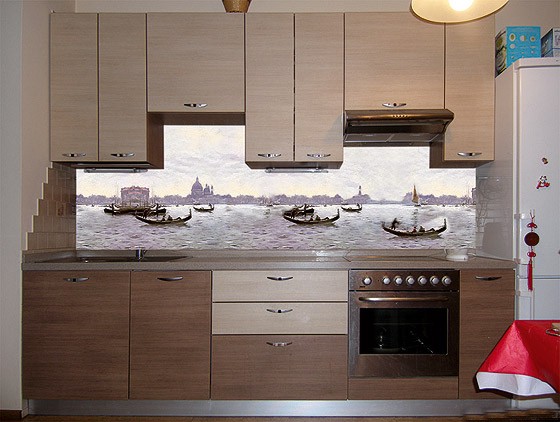
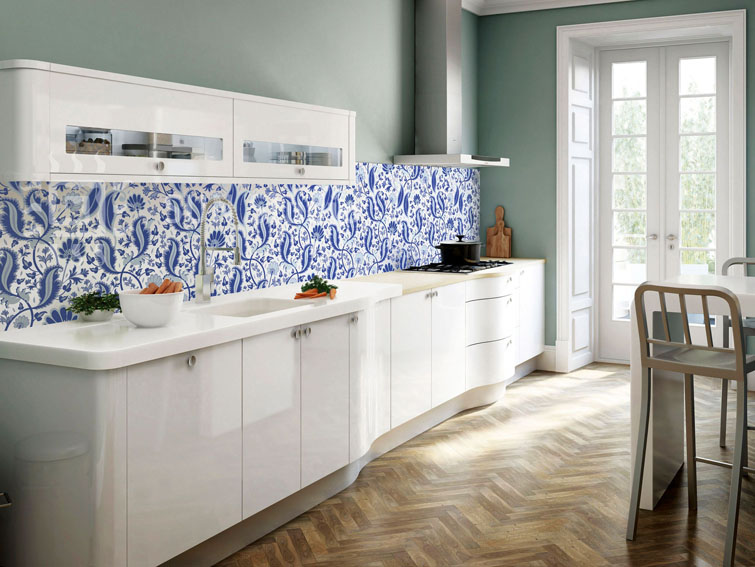
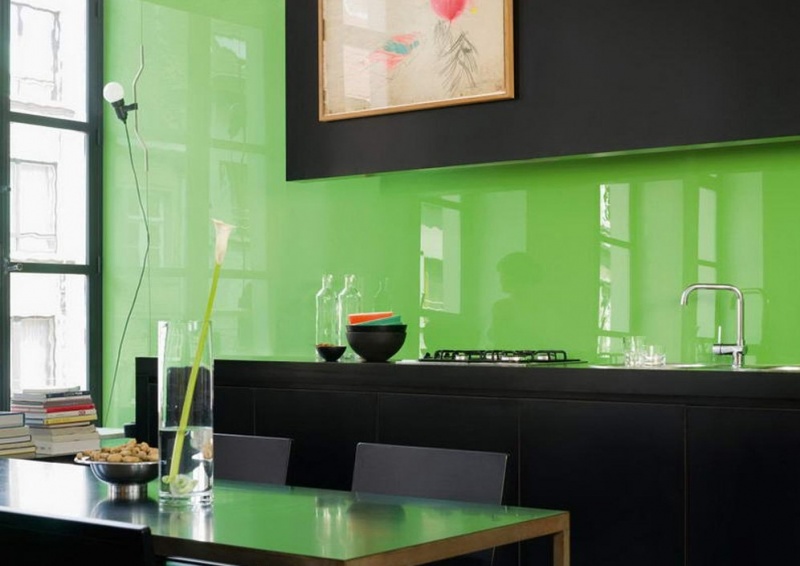
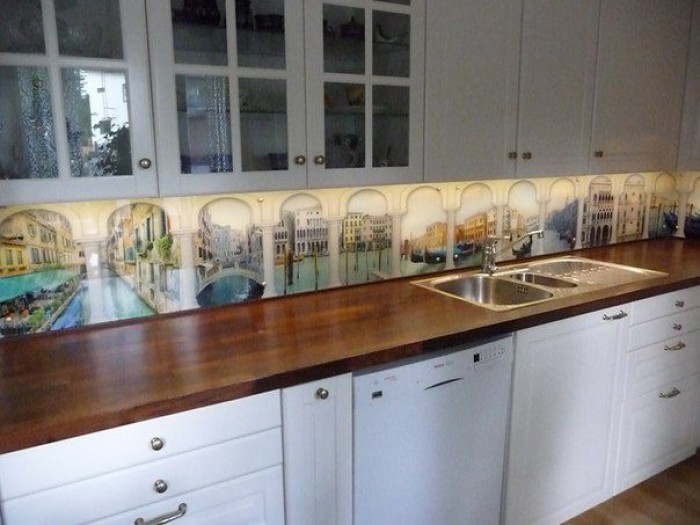

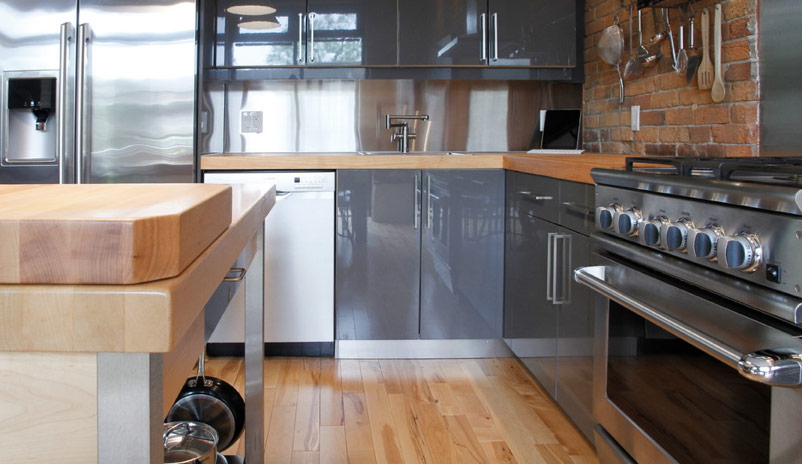
Dreaming "refresh" the interior of the kitchen?
Do you want to get rid of boring tiles and washable wallpaper, replacing them with something really new and unusual?
Are you looking for something for your favorite cuisine… (Fresh and Tasty)+(Fashionable and Eco-Friendly)+ +(Fast and High Quality)= ?
And we know the answer is SKINAL FROM STEKLOKOLOR.
We offer a great move: order a glass backsplash for your kitchen and use it to decorate the space between the work surface and hanging cabinets - convenient and very creative!
ASPRONS FROM GLASS AND MIRRORS IN ASSORTMENT
GLASS APRONS WITH PHOTO PRINT
Want more uniqueness? A spectacle that will delight you? We offer you glass aprons with photo printing is a revolutionary solution in the creation stylish interior for any room, but especially the kitchen
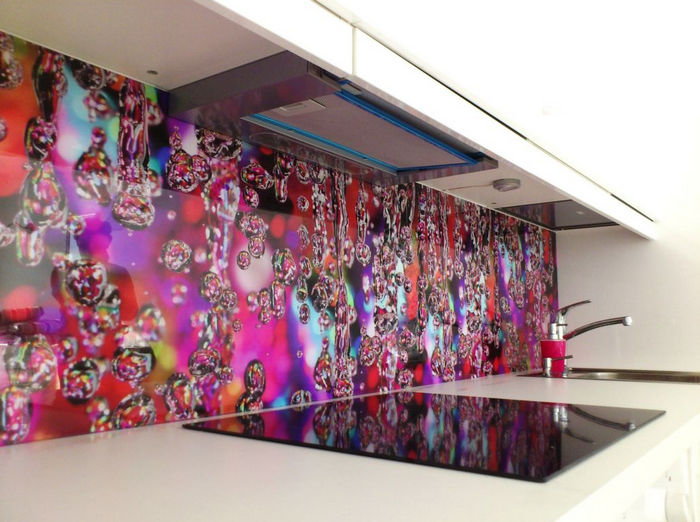
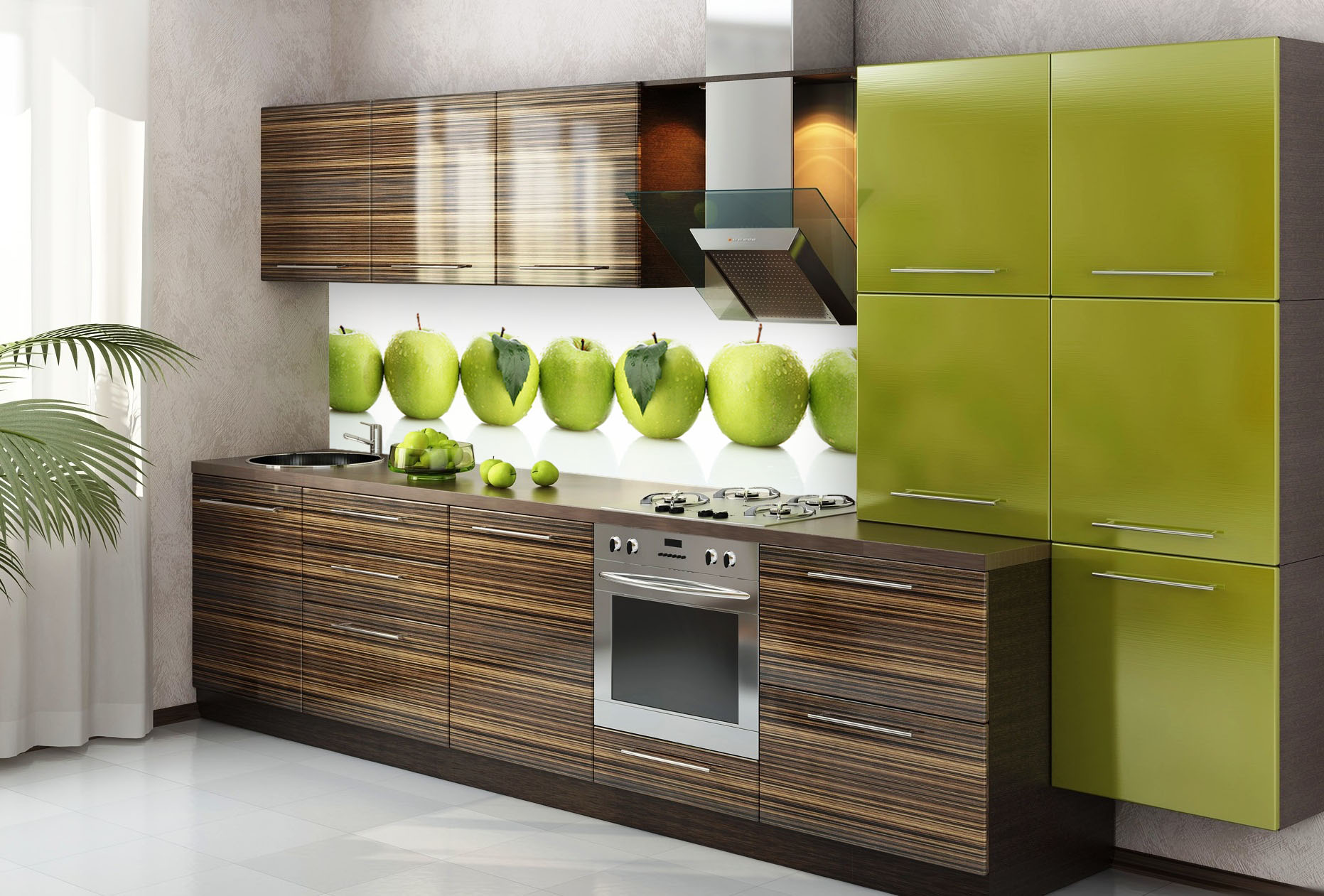
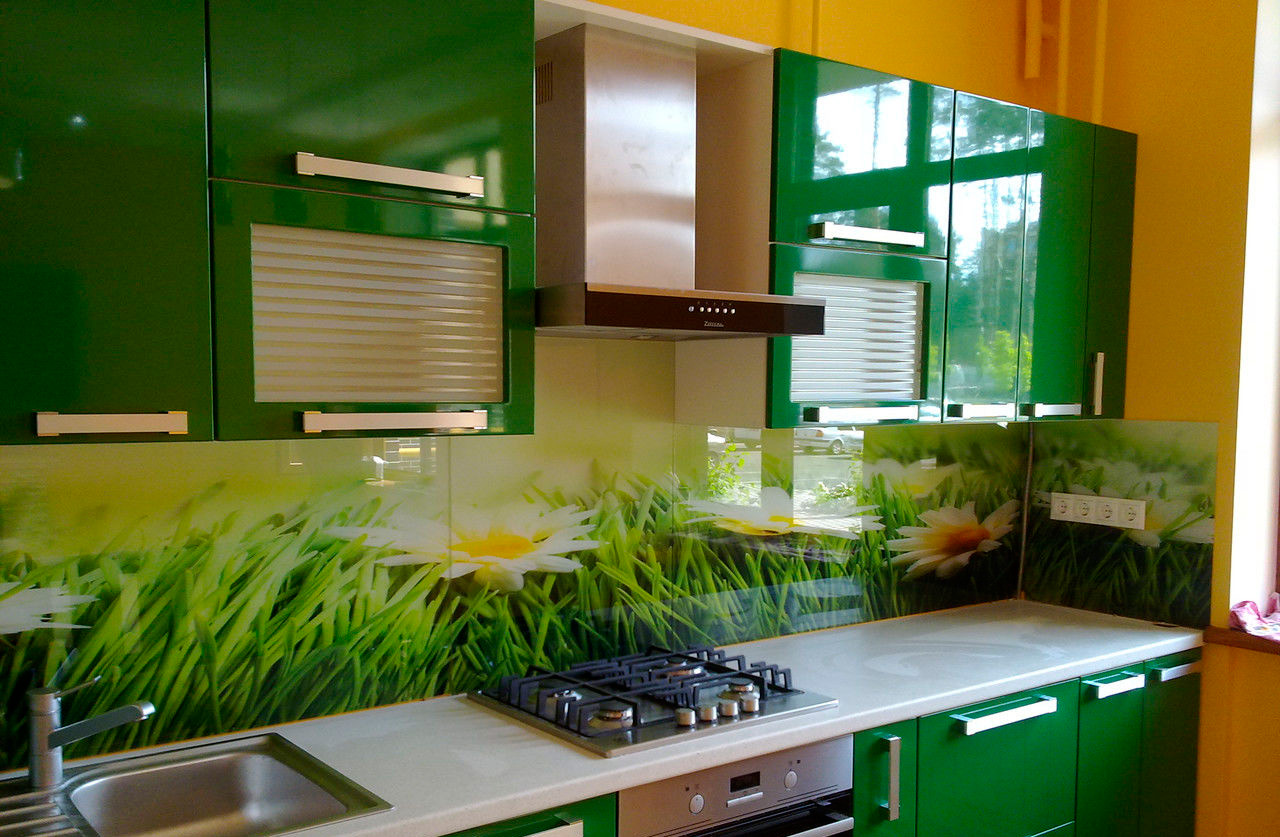
Fascinating landscapes, the grandeur and panorama of megacities, familiar and dear faces, photos from the family archive - all this will “come to life” on a glossy surface glass kitchen apron, sparkle with the freshness and charm of dear memories. You will plunge into a completely new atmosphere of your kitchen. Glass apron with photo printing will be the main focus design style your updated kitchen.
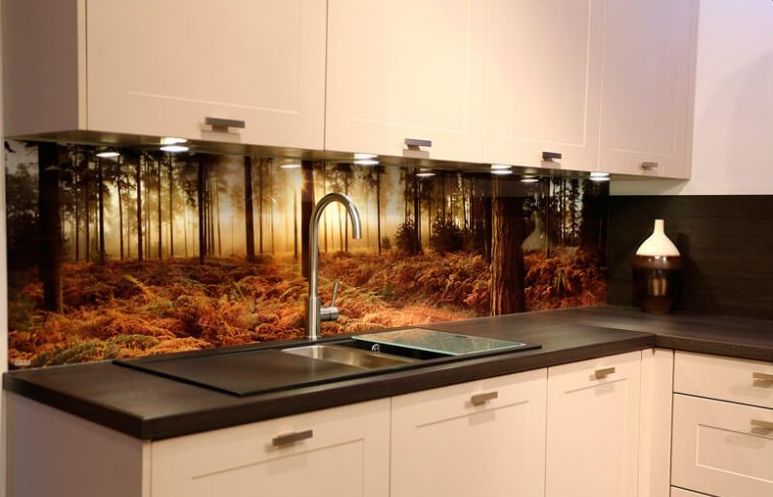
Flawless gloss, perfectly smooth surfaces and rampage bright colors, skinali resemble the pages of fashionable glamorous magazines.
They fascinate, you want to look at them, you want to touch them, feeling all the nobility of glassware or mirrors.
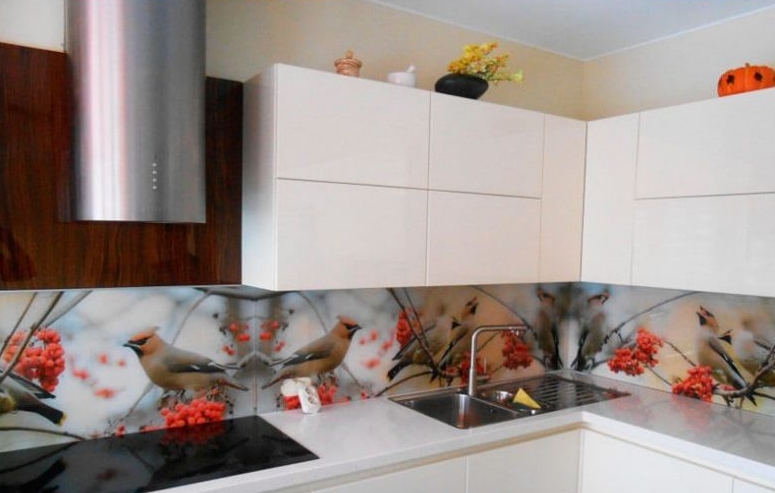
Glass screens and panels are among the first in the list of style-forming elements of the interior and are a favorite tool for designers, opening up a huge range of opportunities for the implementation of creative ideas.
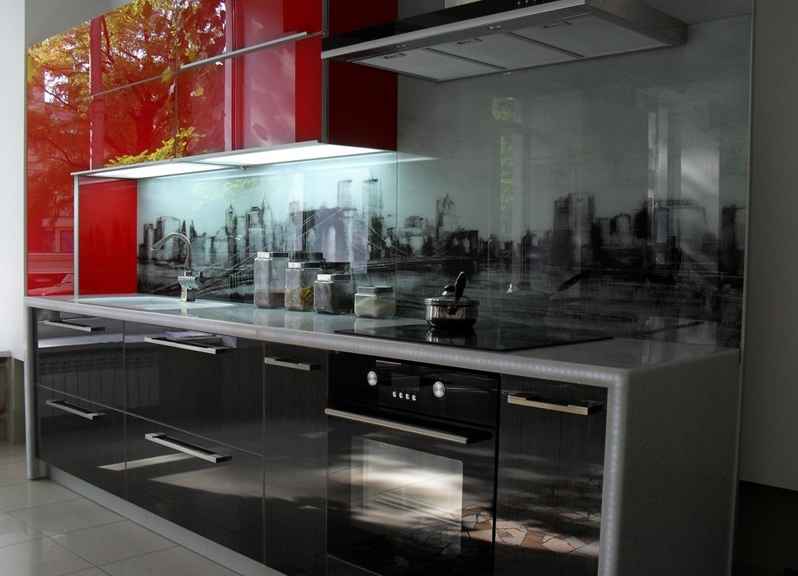
Decorating walls with glass and mirrors is not only original and fashionable, but also profitable. The use of a glass apron makes it possible to quickly complete the “fine” finishing of the premises without disturbing the rhythm of life of a shopping or office center; hotel or restaurant; houses or apartments.
Modern design thought pays special attention to glass products. They allow you to create a unique interior with minimal cost strength and time.

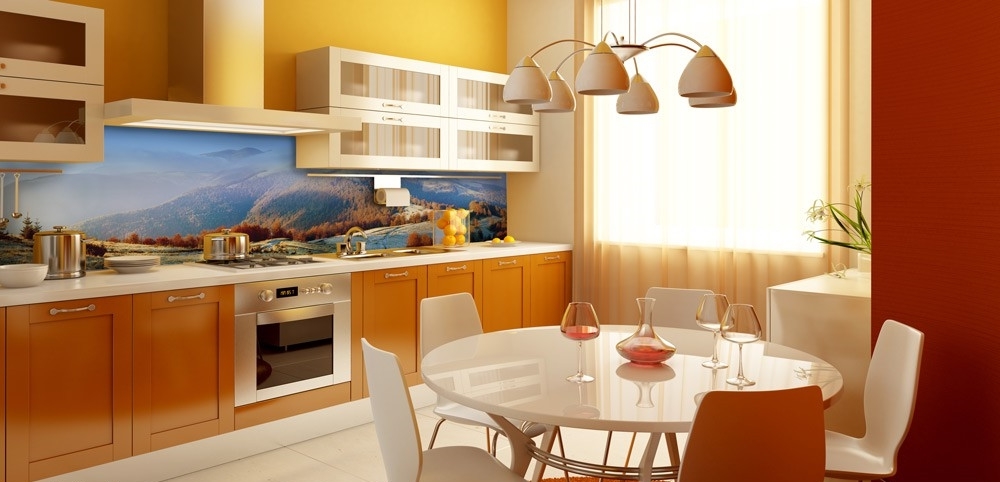
After glass aprons will sparkle in your kitchen, the colors of ceramic tiles will seem faded to you, and the patterns - primitive.
Ordering an apron for the kitchen made of glass or mirrors is not only fashionable, but also profitable. Prices for glass aprons are formed absolutely transparently, a detailed price list for all services is posted in the appropriate section of our website.

We have our own glass production, the most honest prices and optimally short order production time - this gives you the opportunity cheap buy in Moscow exclusive glass aprons with photo printing for your apartment / cafe / restaurant or any other room and create a new and trendy interior.
Kitchen apronis a special protective panel on the wall, which is located in a hot and humid area.
Finishing this area with sustainable materials has been practiced for a long time. Initially, tile or moisture-resistant paint was used.
bright apron in the kitchen will emphasize your individualityRecently, kitchens with glass aprons have been popular. Before purchasing a design, you should find out what are the advantages of this product and how to choose stylish design? To do the installation correctly, you should choose a quality material.
Benefits of glass construction
A kitchen set with a glass insert compares favorably with alternative products.
Glass is characterized by resistance to moisture, practicality and many other advantages.
The following advantages of this material can be distinguished:
- easy cleaning and hygiene. Tempered glass is dense material with a non-porous structure. Dirt does not penetrate the surface and is easily removed. Unlike tiles, there are no seams on the surface where grease is clogged;
- installation is carried out almost dry. It does not require space and preliminary alignment walls;
- glass panels in the kitchen are mounted quickly;
- glass is characterized by decorativeness, any pattern is applied to it. The design is carried out in the form of a panel or a poster with photo printing.
Cons of the product
Glass panels on the backsplash for the kitchen have certain disadvantages. Tempered glass is difficult to drill, so once installed, can not be hung additional elements. Everything required holes are done in advance.
These designs spread quickly and are not unique products. In addition, the material does not have laying variations or the choice of shapes, like mosaics or tiles.
How to choose an apron?
Glass on the kitchen wall is selected in size from 7 to 9 mm. The kitchen uses a hardened type of product. This glass is several times stronger than standard glass.
The apron is resistant to heat and therefore placed near the hob.
Select quality product The following tips will help:
- Tempered glass is selected for the kitchen apron. It is characterized by heat resistance and durability. Ordinary glass or plexiglass is easier to damage.
- When choosing a design, it is worth considering the style in which the kitchen is made. The glass working wall for the kitchen is suitable for the interior in the style of minimalism, loft or high-tech. For classical cuisine frosted glass is recommended.
- It is worth considering the proportions of the room when choosing a pattern. Horizontally arranged ornaments expand the space, while vertical ones stretch upwards.
- When purchasing glass in the kitchen for the working wall, you need to choose the right color that would be combined with the overall color palette in the kitchen.
- Recesses for sockets are made in advance, after installation they cannot be made.
- Glass products with backlight are selected. Wherein glossy surfaces lighting is not recommended. spotlights. LED and linear light sources are used, which evenly distribute light. Matte designs reflect light rays less.
- Panel installation can be left for last. this process does not pollute the space.
Varieties
The apron is suitable for small and narrow kitchens. The design reflects surfaces and visually creates space. Glossy objects make the room brighter and transmit light.
landscape pictures, maritime theme or urban views create perspective and three-dimensionality.
There are the following variations of glass products:
- Colorless models are considered invisible. They protect the wall with wallpaper or painting from greasy splashes. Glass is selected transparent or frosted. Look panels with a textured surface or silk-screened.
- Skinali for the kitchen are panels decorated with photo printing. The image is placed on reverse side via special technology using UV ink. You can make skinali with backlight with your own hands.
- A plain and colored apron is used. On the inner panel a certain paint is applied, and then a heat treatment is carried out.
- The use of vinyl film is considered affordable option. In this case, you can stick the picture on the glass. The film is rolled onto the surface inside the glass.
- Laminated glass is called triplex. The design consists of two glass layers, between which the image is placed.
- Designs with mirror surfaces are used that expand the space.
A variety of options with drawings gives scope to the imagination. You can choose a kitchen apron with orchids from the photo that is presented. There are options with landscapes and urban motifs. In addition to skinali orchid, there are daisies, roses and tulips.
How to install a glass apron with your own hands?
Glass can be fixed to the wall using fasteners and silicone sealing method. The joints between the table top and the panel are sealed. For fasteners you will need special holes. Fasteners of 2 cm are selected.
Glass apron is best fixed with fasteners (in the form of chrome hats)Mounting with fasteners allows you to align a curved wall.
Preparatory work
Before installation, make sure that working surface has no prominent elements.
It is necessary to check that the dimensions of the panels correspond to the dimensions of the openings.
The hole size is slightly larger than the fastener. In this case, the holes are arranged symmetrically.
Before installation, it is not required to level the walls, but for corner elements surfaces are checked for verticality.
For surface in 1 square meter you will need at least two pairs of fasteners.
If there are electrical sockets and switches, they are removed top coats. The glasses are extended by the size of the thickness of the glass panels.
Decorative lighting
How decorative element special lighting is used. The LED strip should be attached to the glass around the perimeter. This element illuminates the surface of the structure and illuminates the work surface.
LED strip goes well with a futuristic interiorThis lighting method saves energy. In this case, the tape can be white or colored.
Apron installation
The panel is installed after the arrangement plumbing equipment, furniture and electrical outlets.
The panels are applied to the wall, and markings are made for the holes. Then holes are drilled according to the size of the dowels, which are hammered into the recesses made. Removed from the apron protective film, and it is pressed against the wall surface.
Each element is strung on fastener. To prevent contact of self-tapping screws with glass, silicone dampers are inserted.
Decorative caps are mounted on top of the panels, which provide fixation.
Sockets and switches are fixed in place.
Such a seemingly fragile material, like glass, can be an excellent replacement for a tiled backsplash in the kitchen.
With a number of advantages, the main of which is a laconic appearance, glass aprons are gradually becoming the most desirable option for kitchens of various styles and sizes.
modest kitchen sets turn with such an apron on the wall into a piece of art, and headsets of significant size receive additional volume “in depth”.
Not every glass is suitable for a kitchen apron. It must be strong and resistant to typical kitchen high temperatures, and, accordingly, tempered.
The strength of tempered glass is 5 times higher than that of ordinary glass.
Even if the glass suddenly breaks, which is the exception rather than the rule, the fragments will not be sharp, but rather small in size.
Alternative types are not suitable for an apron, for example, such as plexiglass, which is easily scratched and difficult to clean from kitchen dirt. In addition to tempering, the glass for the apron must go through the discoloration stage, otherwise the selected picture will give off greenery.
Glass thickness can be 6 or 8 mm. It is desirable that the length of the glass panel be limited to 2-2.5 meters. In the event that a longer apron is needed, it must be made up of several components.
With a quality work done, the joints between the parts will not be noticeable.
The minimum height of the backsplash is 40 cm. The maximum is limited only by the height of the cabinets above the countertop and is usually 90 cm.
There are also certain standards regarding the location of holes in the surface of the apron and their minimum dimensions:
- hole diameter - 8 mm,
- rounding radius - 8 mm,
- distance between the edge of the holes - 10 mm,
- distance from the edge of the hole to the edge of the glass panel - 10 mm,
- distance from sockets to holes - 12 mm,
- the distance from the socket to the edge of the glass is 30 mm.
Thus, the ideal glass for an apron in the kitchen is tempered discolored glass with a thickness of 6 or 8 mm, a height of 40-90 cm and a length of no more than 2.5 m.
Advantages

Caring for a glass apron involves the usual wet cleaning using special cleaning products. Smooth surface glass is quickly cleared of greasy spots, the appearance of which is typical for the plate zone. Divorces do not remain.
disadvantages
- Impossibility of repair or alteration of the panel.
- Difficulty of transportation.
- The need for frequent wet cleaning, otherwise the glass panel loses its appearance.
In addition, manufacturers are often unscrupulous in the selection of glass, passing off bottle-colored options as absolutely clear glass. Therefore, the difficulty of choosing the right glass can also be identified in the list of disadvantages. You need to pay attention to this at the stage of ordering.
Varieties
A glass apron can be made using one of the following technologies. Firms for the manufacture of glass aprons practice various techniques, so you need to carefully approach the discussion of the method used in a particular case.
The clear glass option is a way to protect the wallpaper or paint on the wall from splashes of water, grease and other factors that can affect its appearance. Clear glass becomes an invisible barrier and adequately emphasizes the decoration of the kitchen. 
The range of such aprons includes glass:
- glossy,
- matte,
- with texture
- with silkscreen,
- with sandblasting.
Glass produced by one of listed ways, can be not only smooth, but also have an unusual texture.
Textured surfaces look unusual and only decorate the wall. Using the method of silk-screen printing or sandblasting, a pattern, an inscription or a small drawing can be applied to the surface of the panel, the background for which will be the wall behind the apron.
Tinted glass
If the colorless option is not yours, then you can use the service of installing tinted glass, for which the same decoration options are possible. Shades of tinted glass can be very different: gray, bronze, brown. 
As in the previous variety of glass aprons, to install a tinted version, you will need an attractive the background, as it will shine through the apron.
Most often, such glasses are used when you need to set a certain tone for the wall, for example, in the color of the headset.
Monochromatic coloring
To obtain bright colored aprons, one-color staining is used. The technique consists in applying glass panel special paint. The glass is then heat treated.
The palette of shades in this version is quite extensive and allows you to choose a tone-on-tone apron for furniture or, conversely, shade the wall with an alternative color. However, monochromatic coloring may seem a little boring, therefore it is inferior to the next variety. 
The most popular among glass aprons with photo printing are the so-called skinals.
This type is a glass panel coated with bright image photographic accuracy. Depending on the method of applying the pattern, skinals can be made using:
- UV techniques,
- film printing.
The pattern is applied to the surface of the glass that will be on the wall, so nothing will happen to it during the active operation of the cooking zone. 
UV technology is more expensive than printing on vinyl film.
In the first case, the ink is applied directly to the glass, in the second, to the film, which is already rolled onto the apron.
UV technology allows you to get not only flat images, but also three-dimensional ones. The 3D effect achieved by a special application technique looks very realistic, but will cost more.
The main disadvantage of the film application option is that the vinyl may begin to fade and even peel off over time.
Triplex
A triplex-type apron resembles a sandwich in its design. Its multilayer structure allows you to carefully protect the image from any influences. The selected picture is located between two layers of glass, if one of them is damaged, the entire structure does not break, but becomes covered with cracks.
The high cost becomes the reason for the rare choice of a glass kitchen apron in favor of triplex. In addition, the thick structure of the apron creates inconvenience when fitting cutouts for sockets and roof rails.
Mirrored
Half a step from glass to mirror, so why not use mirror surface as an apron. It looks very unusual and visually expands the space. 
If the mirror apron is too distracting, then you can decorate it with a sandblasted finish or partial matting. Caring for a mirror is similar to maintaining appearance glass.
Another decorative technique may be the use of backlighting. Such an apron looks original and becomes an additional source of light. To illuminate the glass apron, an LED strip is used, which is installed around the perimeter or inside the panel. 
Apron installation
Before installing the apron, it is necessary to carry out preparatory procedures, namely, measure the wall space and determine the locations for future holes for sockets, roof rails and other elements that require placement on the surface.
Installation of a glass apron takes about two hours when professional installers take up the work. At the same time, unlike installing a ceramic tile apron, installing a glass apron will not bring with it a lot of dirt and dust. Mounting can be done in one of the following ways.
Hinged fasteners
The most reliable fixation of glass panels on the wall is provided by hinged fasteners. Even when the glass is thick and heavy, such fasteners will protect it from falling.
Fasteners are metal grooves 1 cm in size, into which the panel is embedded. There is no need to make holes in the glass. The plates perfectly press the glass to the wall and look barely noticeable.
If the apron is not a solid structure, then such an installation is the most optimal, as it makes it possible to accurately dock the edges of the panels to each other.
With this mounting option, there is no need to level the wall or somehow prepare its surface. Also, the apron can be easily disassembled and reinstalled.
Through fastener
 Such fasteners require special holes in the glass panel, which must be created before tempering. These holes are necessary for fastening screws, which, after installation, are closed with two-centimeter caps that hide them.
Such fasteners require special holes in the glass panel, which must be created before tempering. These holes are necessary for fastening screws, which, after installation, are closed with two-centimeter caps that hide them.
The advantage of the pass-through fastening method is that there is a gap of about 4 mm between the wall and the panel, so the alignment of the walls, if they are not perfect, is not required.
Also in this way, the apron can be installed on a layer of old tiles without first removing it from the wall.
Liquid Nails
For aligned walls, you can use the installation using liquid nails. To do this, the apron is glued directly to the prepared wall without the use of additional fasteners.
After mounting the panel, the joint between the table top of the headset and the edge of the apron is closed with a decorative rim. If the apron is composite, then the master will need special accuracy when joining the parts.
Tempered glass is considered one of the most durable materials. In addition, they appreciate it for its lightness in the interior, smoothness and transparency. If we talk about a tempered glass kitchen apron, then it is an excellent alternative to aprons made of materials such as fake diamond, ceramic tile and many others.
Tempered glass for kitchens - pros and cons
Advantages
- The material is considered inexpensive and practical;
- glass is easy to clean and is not afraid of moisture or grease;
- finishing from this material looks very specific;
- ease of installation;
- the ability to equip the kitchen with unique lighting.

disadvantages
Speaking of cons tempered glass, then they simply do not exist. Ordinary glass apron is fragile. It is quite difficult to damage an apron made of tempered glass.
Glass apron for the kitchen. Design options
A tempered glass apron for the kitchen can be made in several ways. The most popular is made of frosted glass with or without drawings. Such an apron should protect kitchen wallpaper from splashes. Many designers still recommend applying ornaments to glass for beauty. This can be done through silkscreen printing or sandblasting.



Panel images for the kitchen is applied in the following ways:
- Photo printing. Applied to glass surface using the latest technologies. Such kitchen aprons not very popular, as their cost is very high.
- Double apron. Sometimes a double apron is installed in the kitchen. There is a poster inside. This apron is very durable. Remember that removing it is quite problematic, so choose a poster that will please the eye for a long time.
- Apron with vinyl film is the most inexpensive and affordable option for the kitchen.
Apron in the kitchen made of tempered glass (video)
Do-it-yourself tempered glass kitchen apron
If you do not want to pay specialists to install a tempered glass apron in the kitchen, then it is quite possible to do it yourself.
Before you make a glass panel, you need to carefully make the necessary measurements:
- To stick the film on the glass panel, the latter will need to be laid horizontally and wiped with a special compound on its surface.
- Next, a water-soap solution is applied. The film is separated from the substrate and placed on the glass.
- After that, you need to squeeze out the remaining water from under the drawing using a squeegee (a special plate that resembles a knife in shape). When the film dries, it will be necessary to cut holes for the fasteners.



- All the resulting sections of the tempered glass apron must be attached to the wall and make the necessary marks in the holes.
- The panel will need to be hung on the holders and the caps screwed on.
When the apron is installed above the countertop, all that remains is to attach the desktop plinth.
Skinali editing in the kitchen (video)
Conclusion
Tempered glass for the kitchen is considered a unique material. It can transform every room beyond recognition. Tempered glass apron can be made by hand or to order. In addition, its installation is available even to a novice master.
